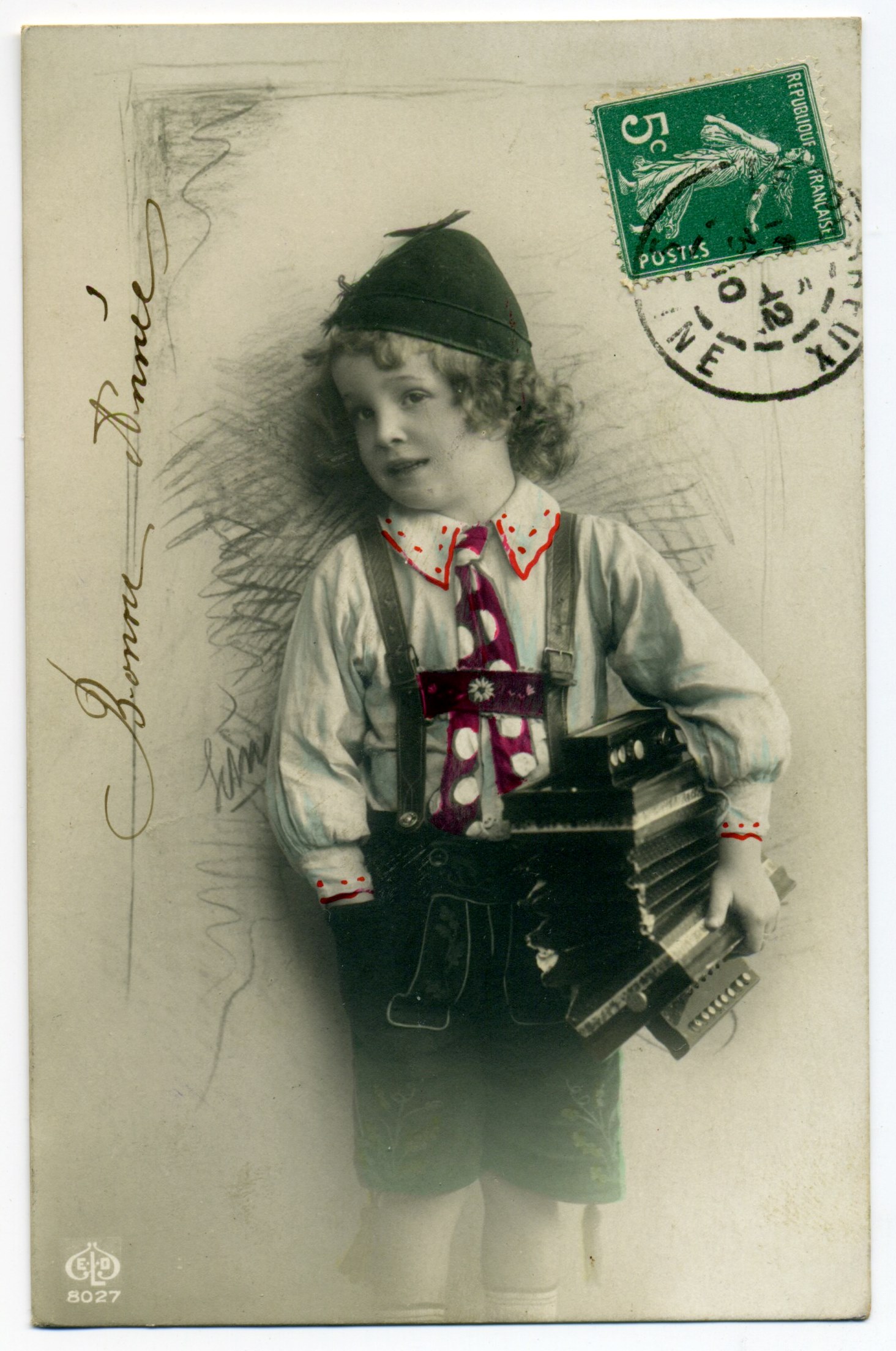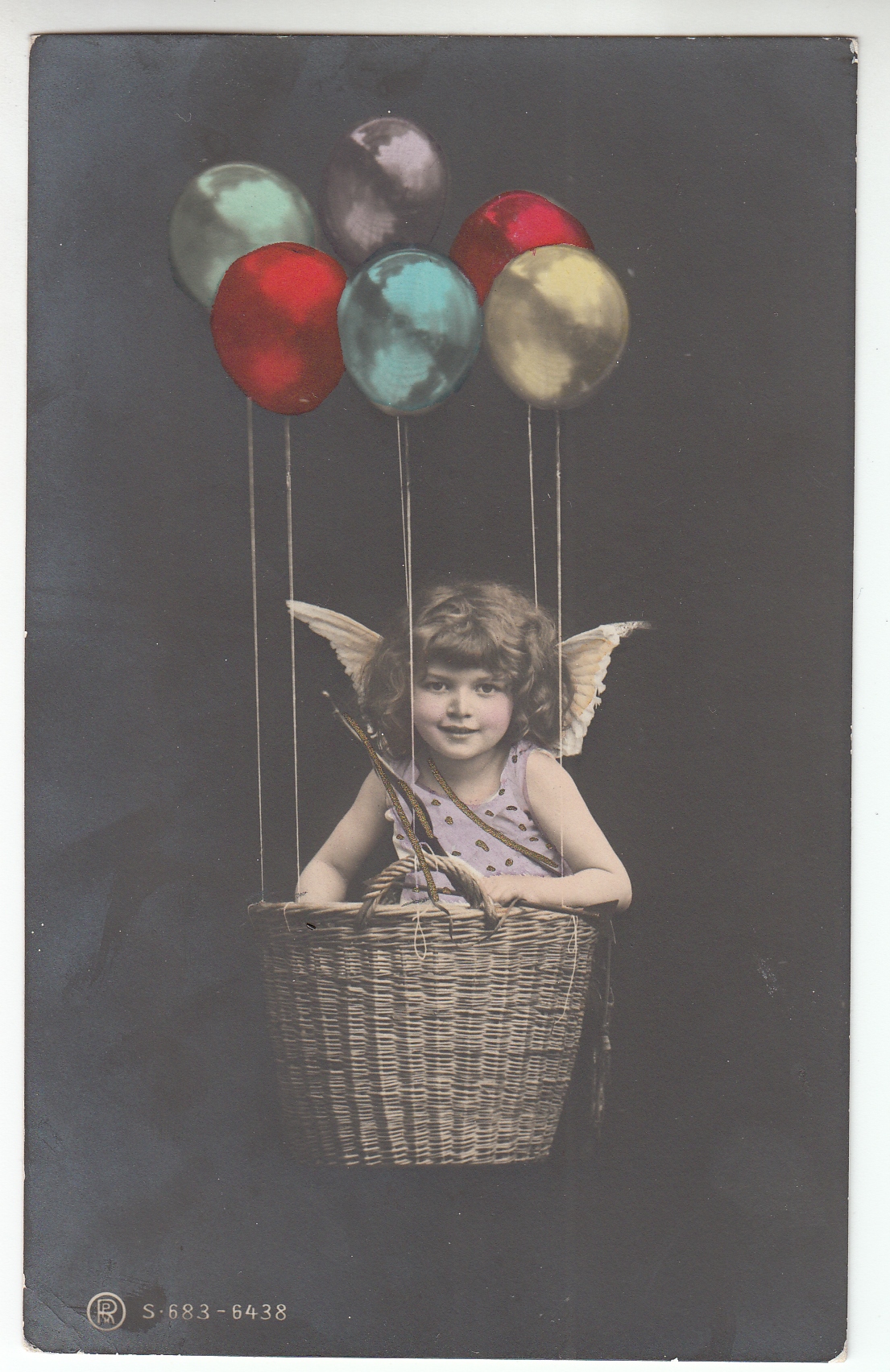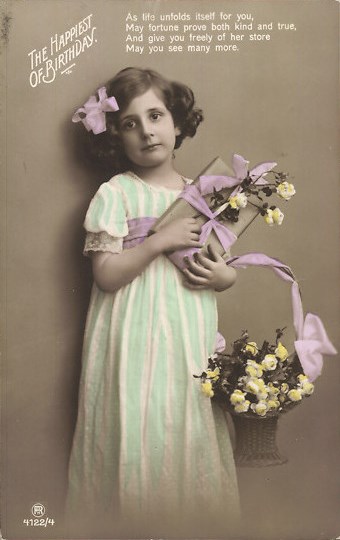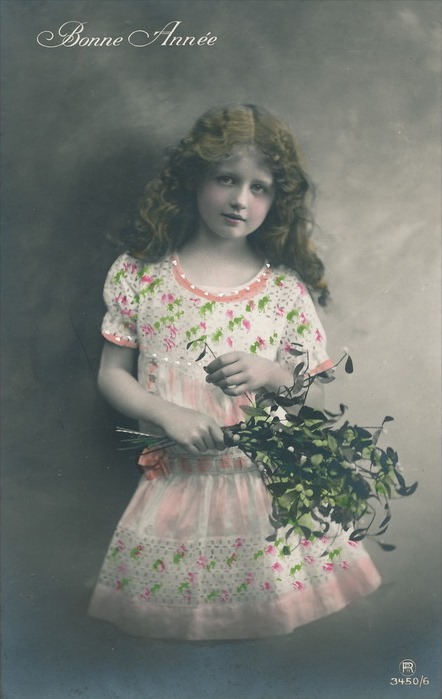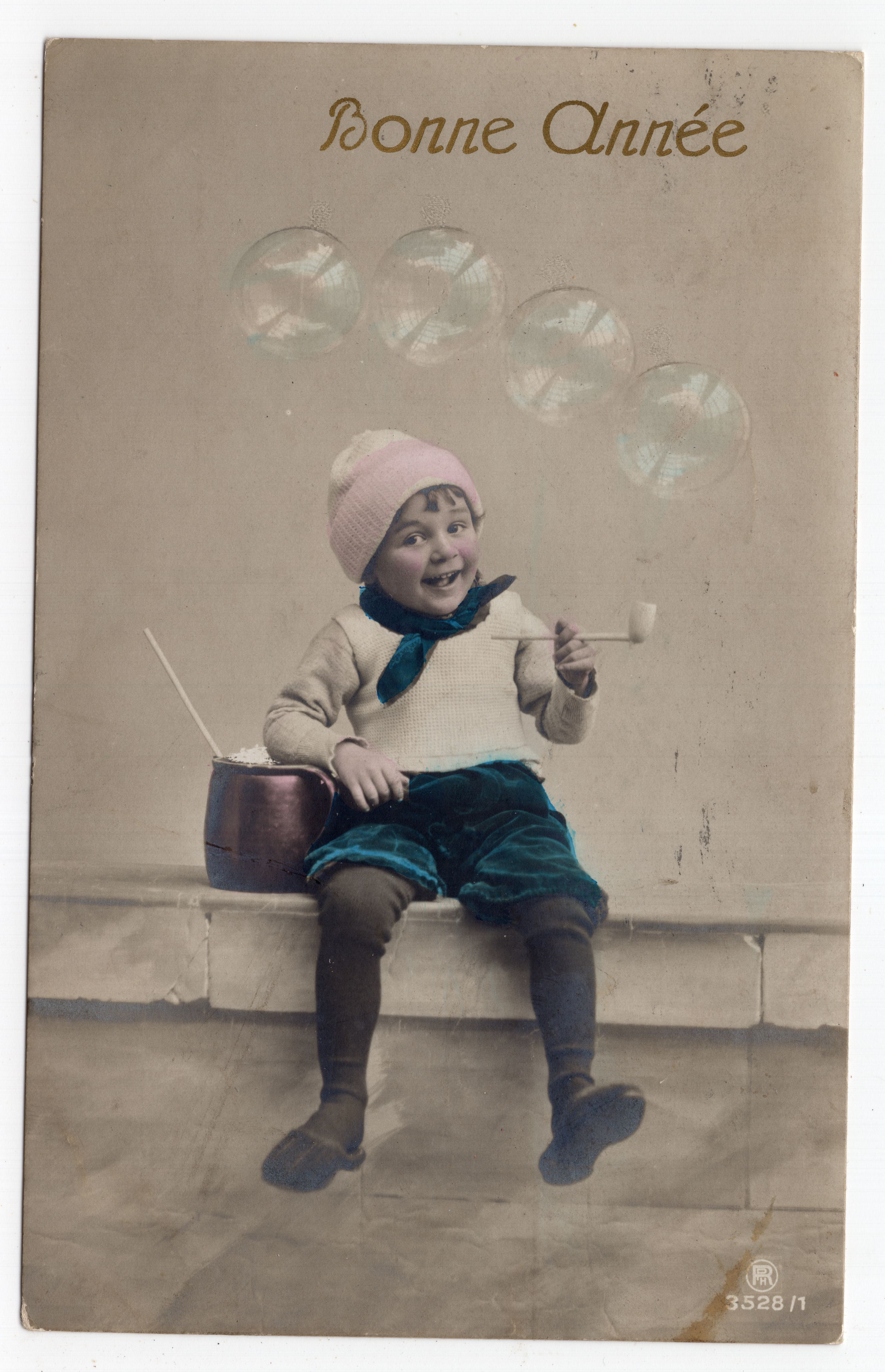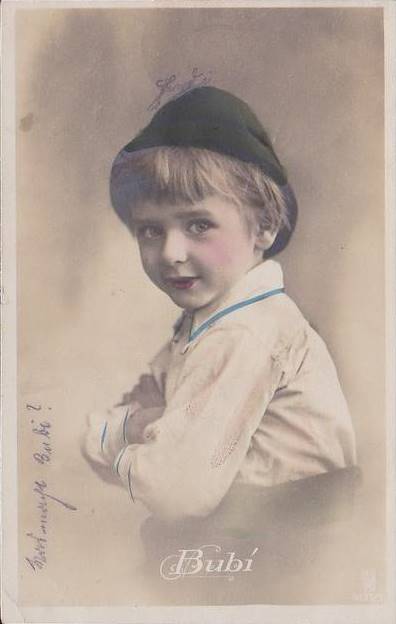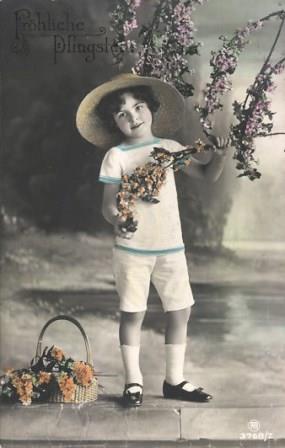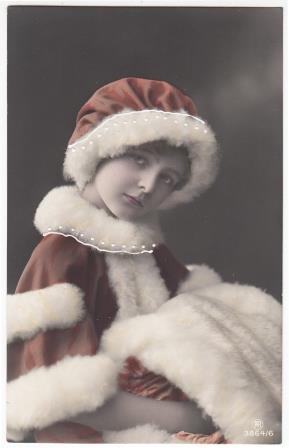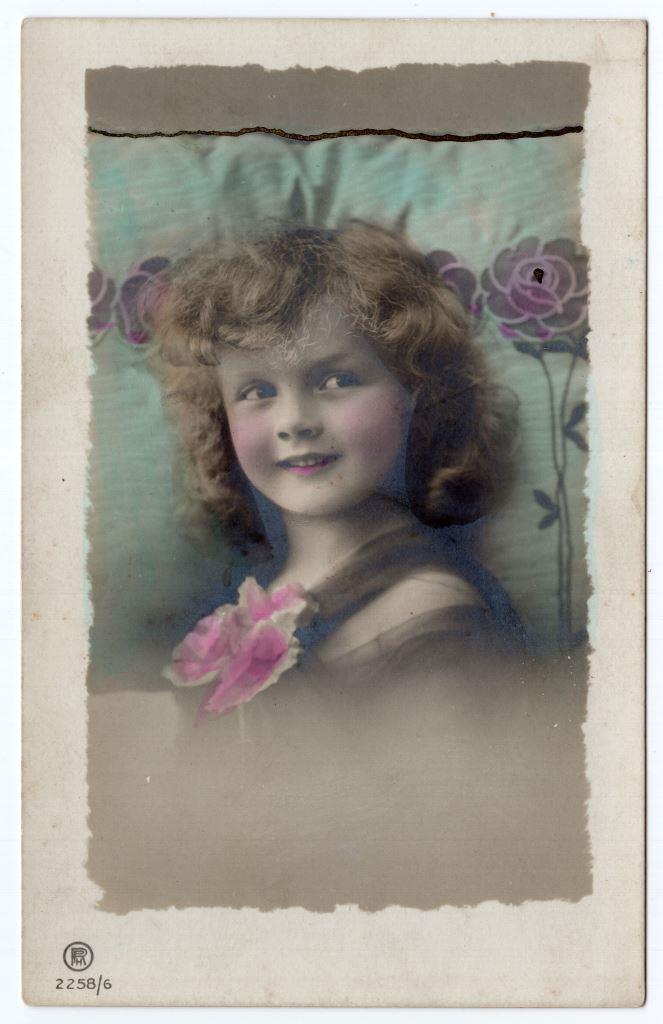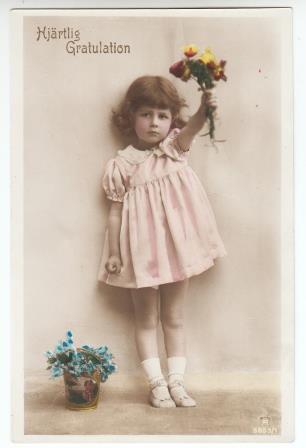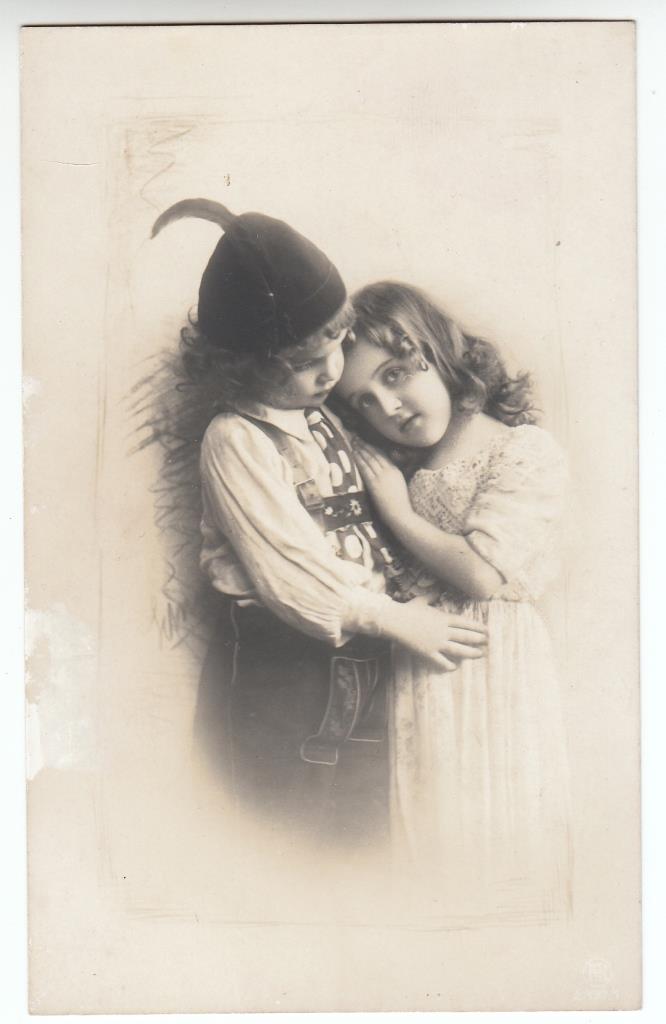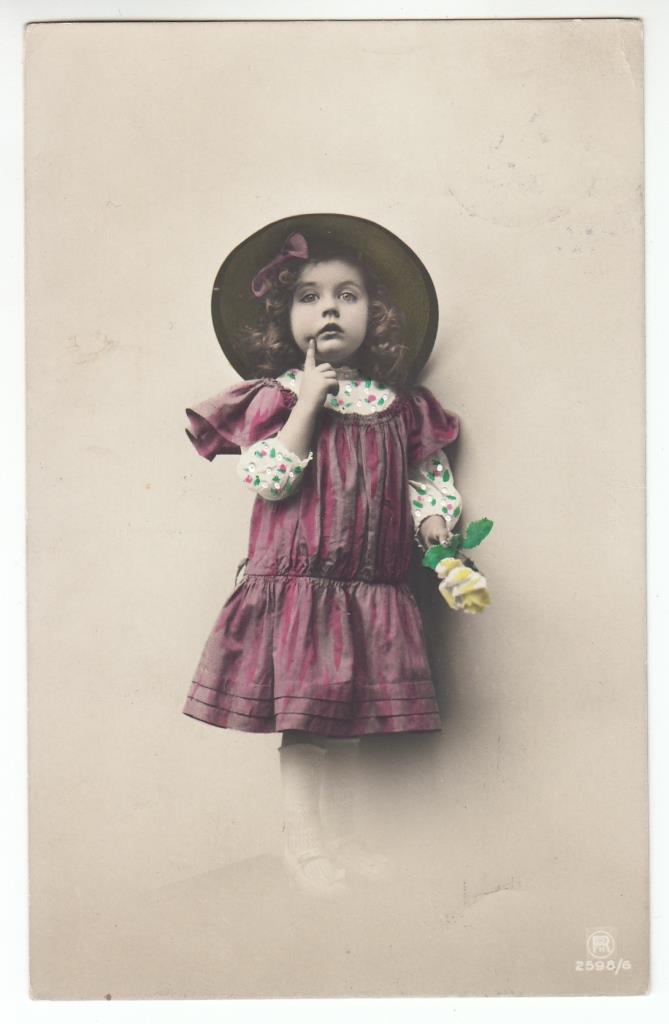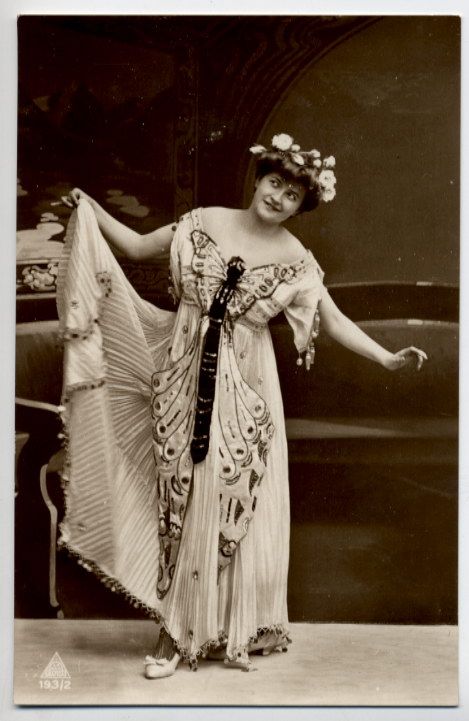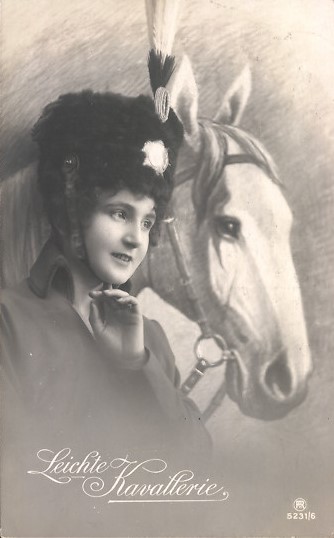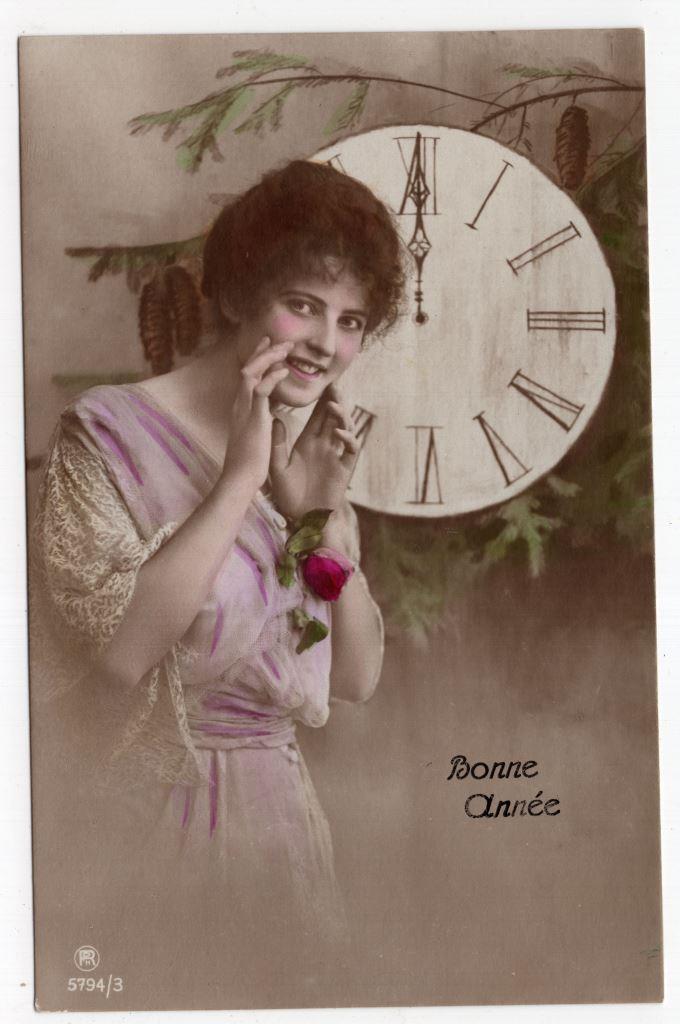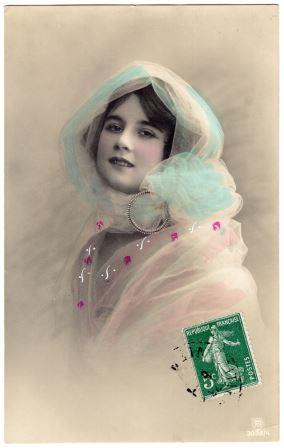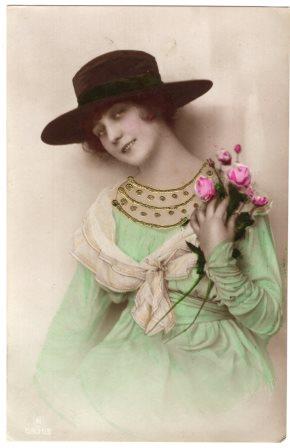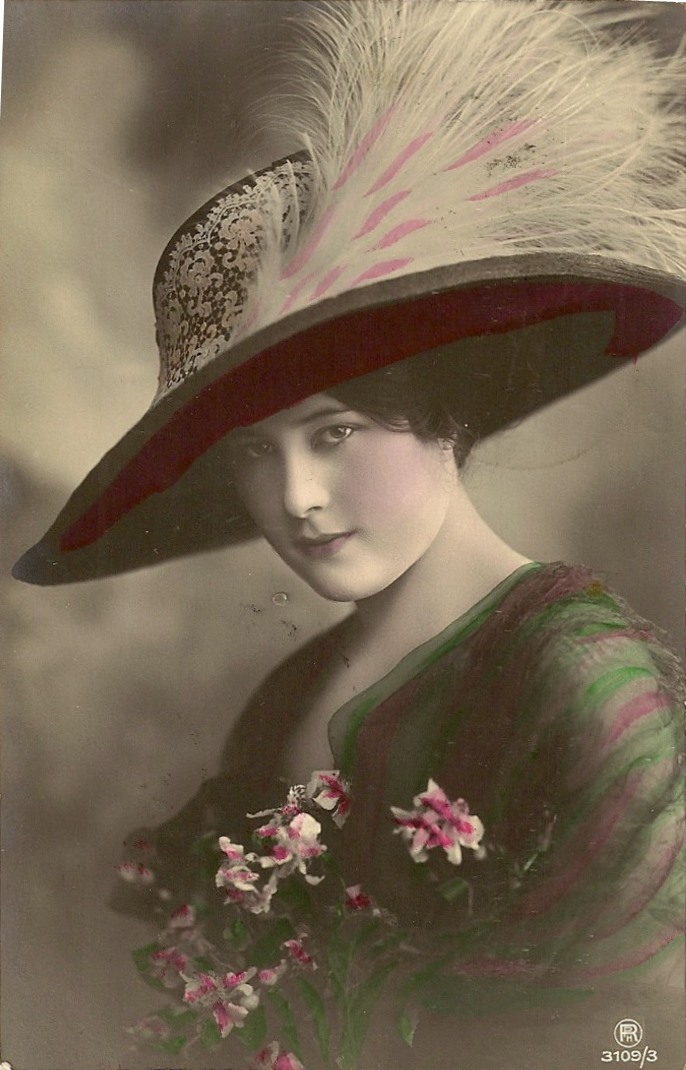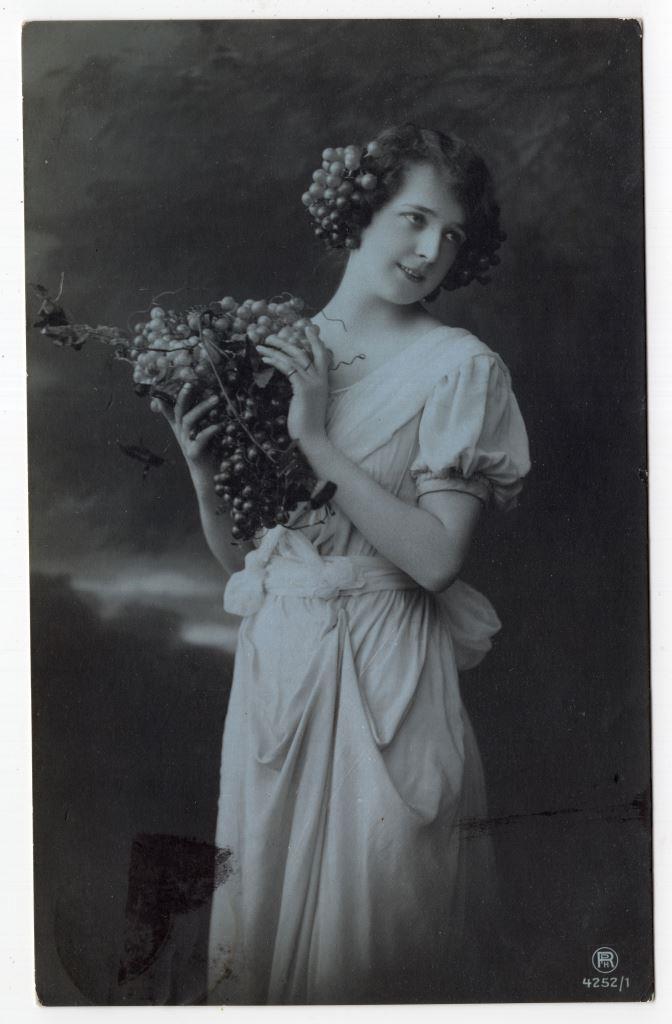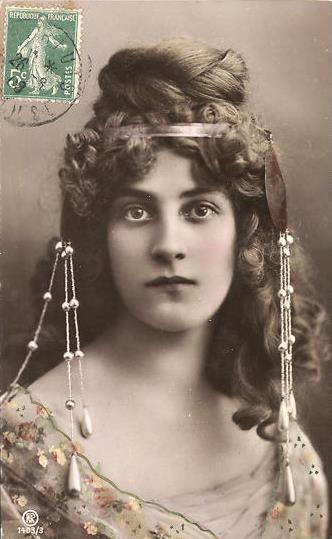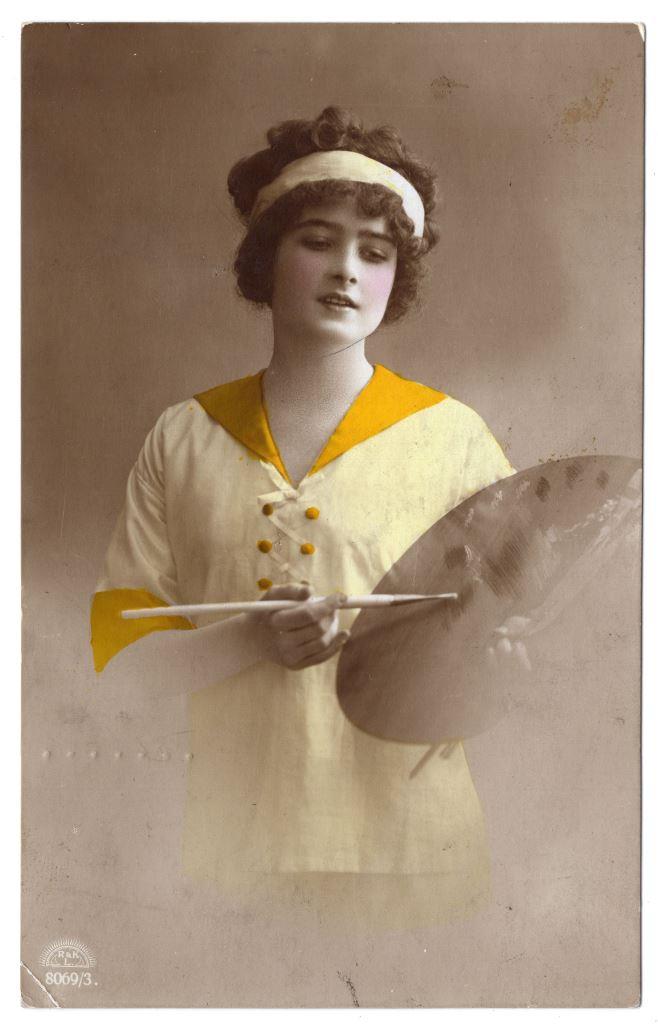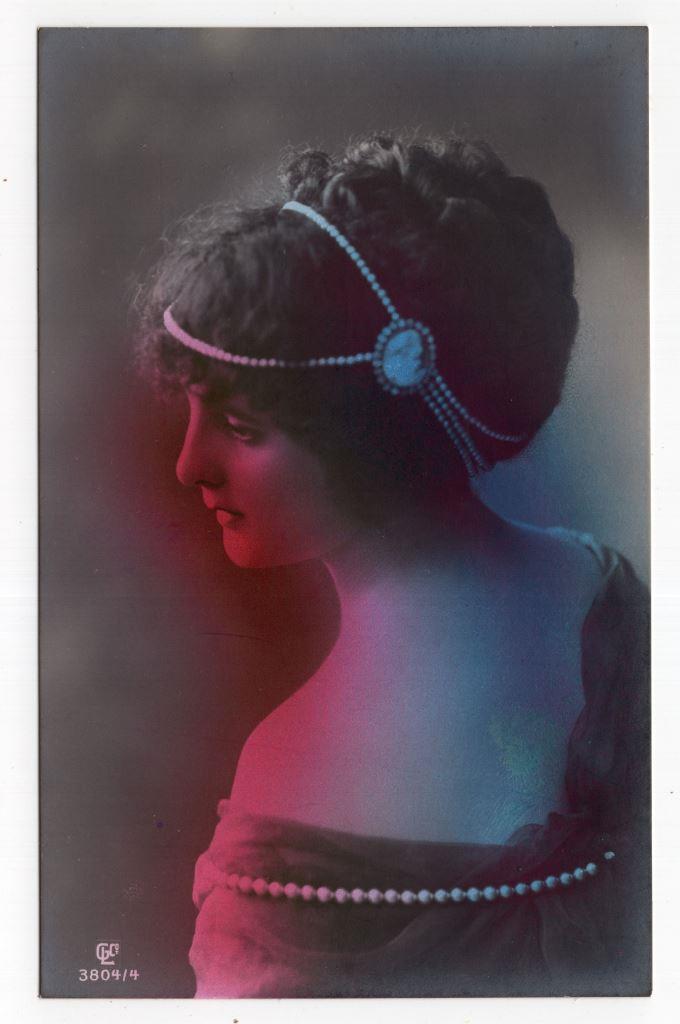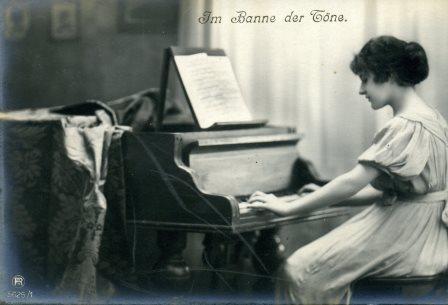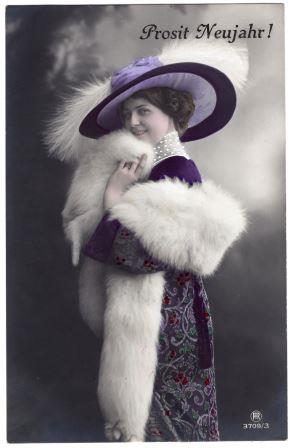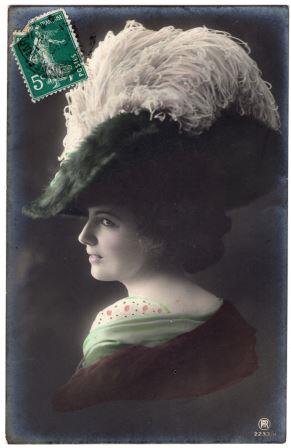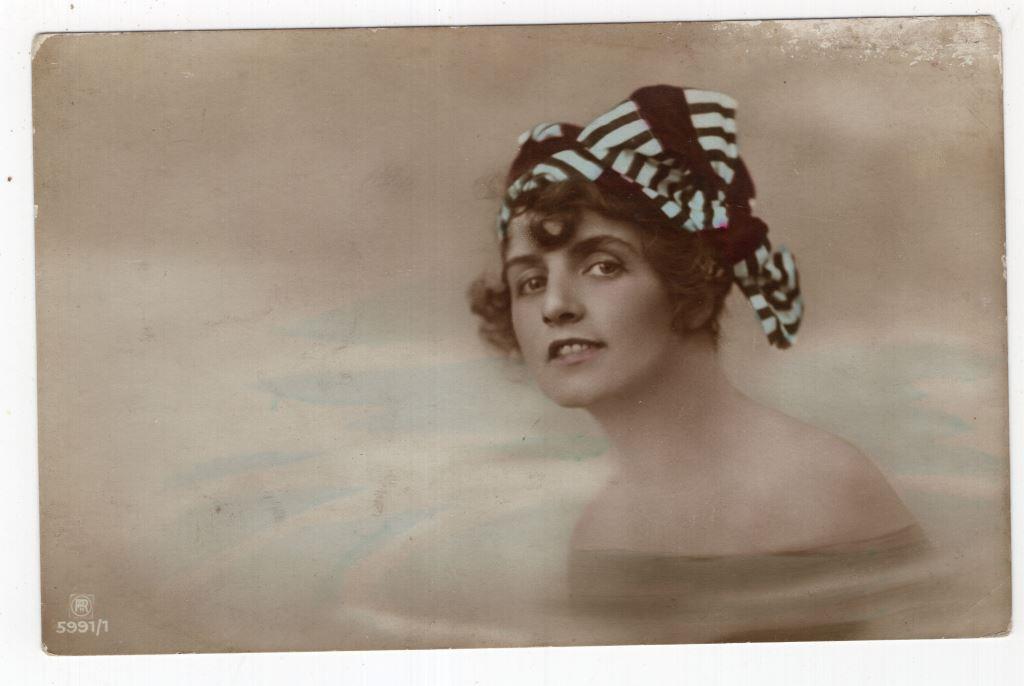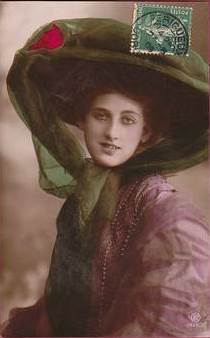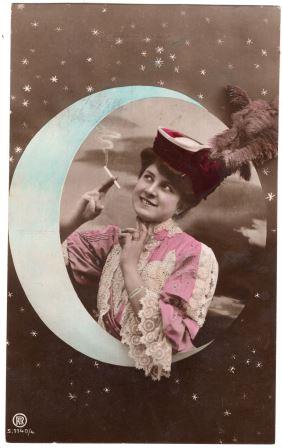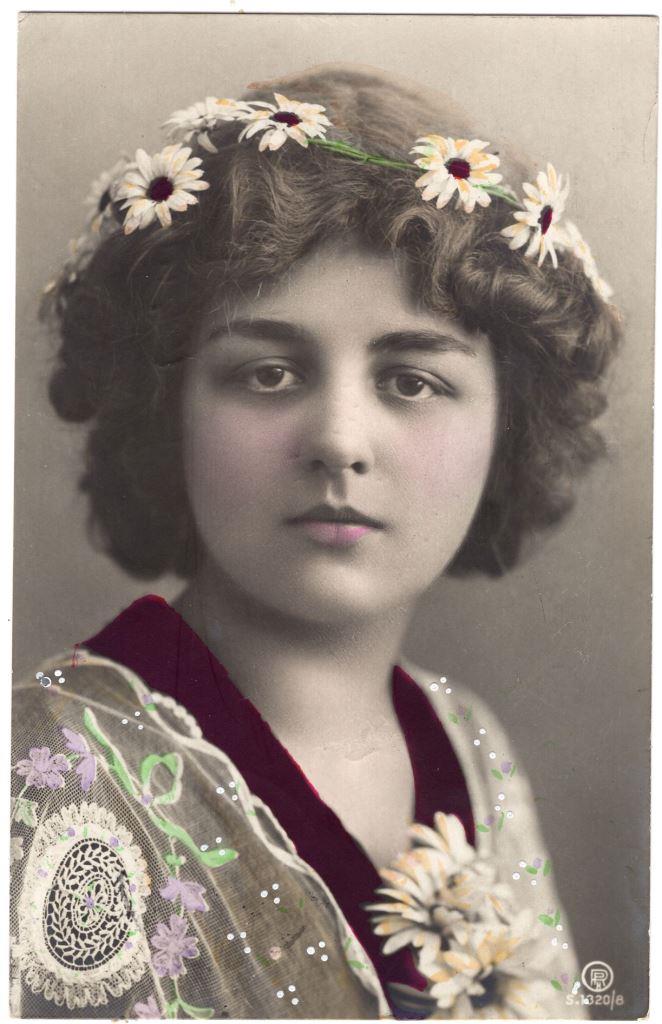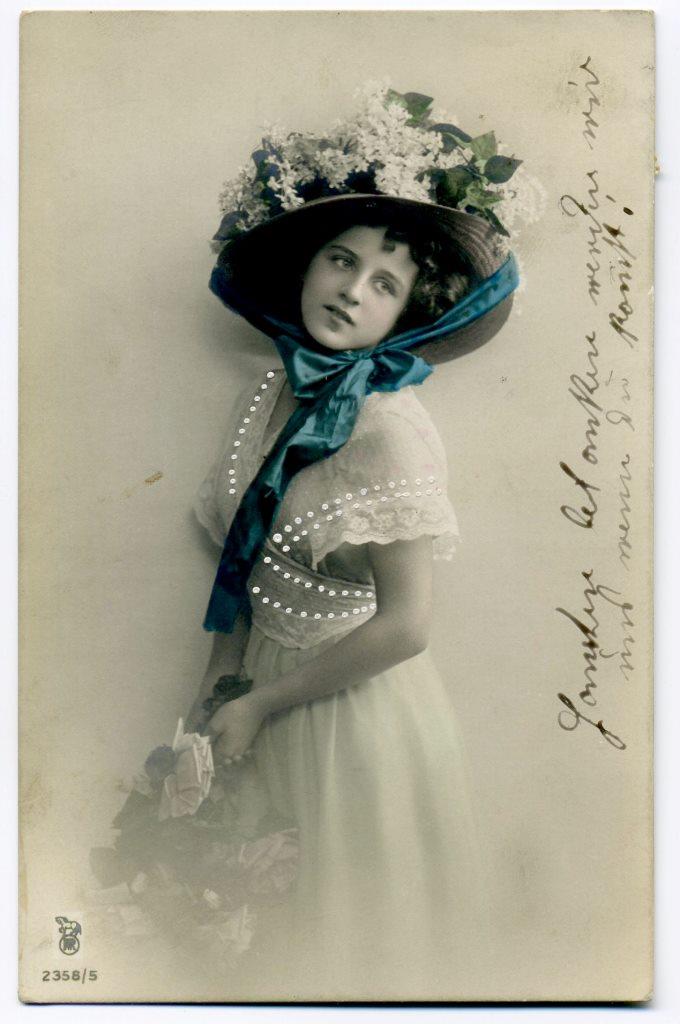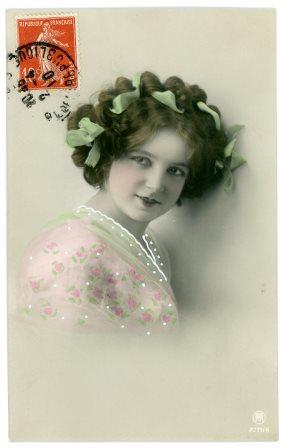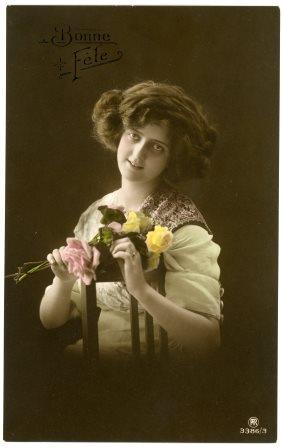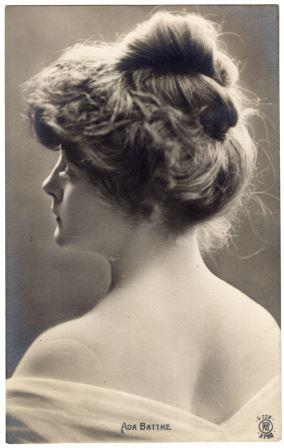
RPH 1822/6
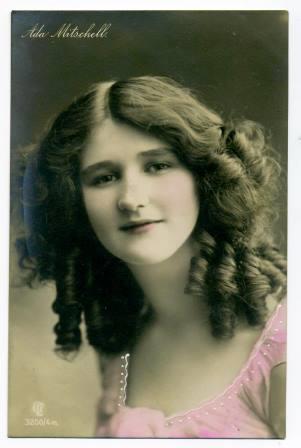
GLCo 3200/4
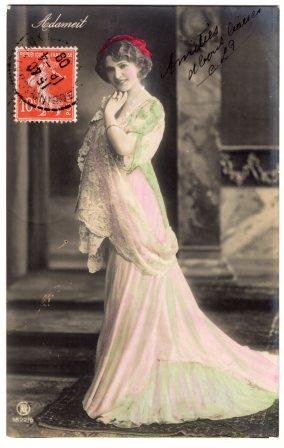
RPH 1822/6

RPH 404
On the occasion of Matkowski's death in 1909, Karl Mauch said: "The audience was thrilled when the very large, very masculine man performed his Götz or Othello. His voice, which he could dampen to a barely audible whisper, caused the house to breakout in trembles. Similarly, the German critic Arthur Eloesser, wrote: "Matkowsky lived above and beyond his time; He thought Faust's thoughts, laughed like Siegfried, fought like Macbeth, and, like Oedipus, suffered from the dubious wisdom of the gods."
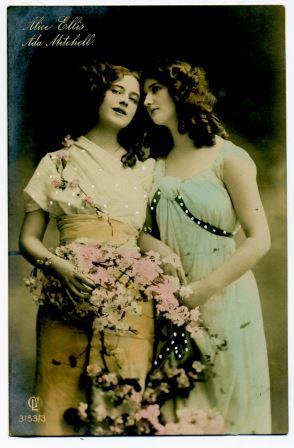
GLCo 3153-3
(Alice on the left)
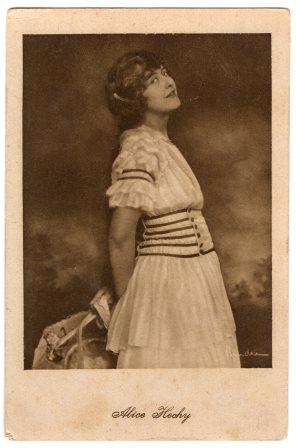
HWB F.53
Before embarking on a stage career, Hechy took her first film role in 1912. Her appearances in films were primarily in supporting roles, often in comedies. She is best remembered for her wriggling, robotic movements of Gliederpuppe Olympia, her role in Richard Oswald's Hoffmanns Erzählungen In the midst of World War I, Hechy moved to the stage, with her first engagement taking her to the Berlin Lustspielhaus. Hechy also frequently appeared as a singer, on several occasions performing in operettas and revues in Vienna. In the Mecklenburg area of Berlin of the 20s and early 30s, Hechy’s primary success was with the Haller Revues, but she also played on the classical stage in light pieces. In addition, she sang in radio broadcasts and released her own records.
Largely sidelined during the Third Reich, Hechy sang in recitals on radio and at cabarets. Classified by the Nazi's as undesirable, Hechy left Germany and went into exile. Shortly after the war ended in 1945, Hechy returned to Germany where she eventually received a solid booking and went on tour.
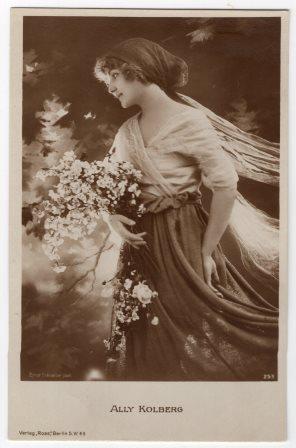
Ross Verlag 253
Visual evidence in the form of a photo on Getty Images suggests Kolberg was a member of Berlin's Tiller Girls in 1907; this evidence has not been collaborated in written materials. Her film career began with a series of comedic short films referred to as the Bubi films circa 1916. Many of her next films involved the Bubi series director, Hanna Henning. One of them, Mutter was issued toward the end of WWI, when conditions in Berlin were grim. Released in the midst of sinking morale, scarce food supply, rationing, poor health, and anxiety over loved ones in the war, Mutter was an appeal for donations to ease child hunger and won the Reich Merit Cross for War Aid. Kolberg also seems to have ventured into the realm of film production, with the 1919/20 Das Medaillon der Lady Sington attributed to Ally Kay-Film Co. mbH (Berlin). All told, Kolberg appeared in more than 25 films during the period of 1916-23.
Along with her career as an actor, Kolberg made a significant contribution as a model. In addition to the nearly 200 RPH series and scores of postcards released by other publishers, Kolberg appears with some frequency in fashion photos in magazines such as Die Woche, Illustrirte Zeitung, The Sketch, and Theatre Magazine. Many of the photos are attributed to Ernst Schneider, Berlin.
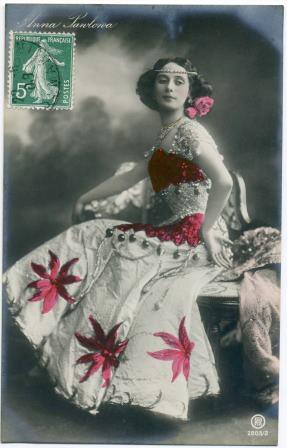
RPH 2003/2
Photographed innumerable times, Pawlowa's image appears on many highly collectible postcards. The two known within the RPH series are most probably the work of Ernst Schneider as the series at RPH 2003 matches visually to a credited photo in the June 16, 1909, issue of The Sketch.
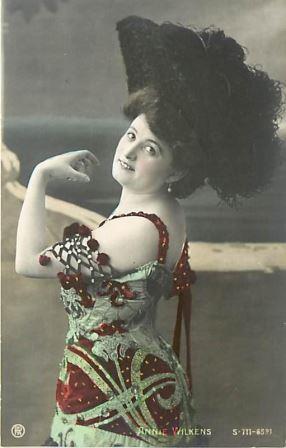
RPH 711
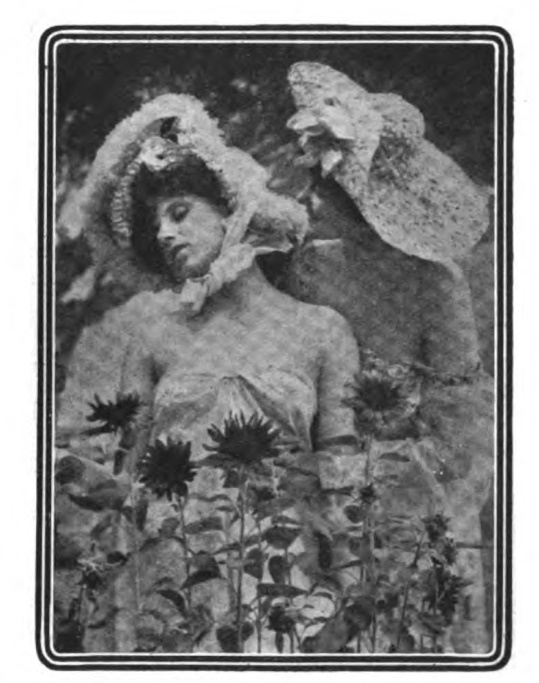
The Sketch
1906 Dec. 26
Austrian Actresses Who Claim to Be British Nobility: "The Aristocratic Sunflowers" are singers and dancers, and are billed as two British ladies of title. A footnote to the programme adds that when they have made £10,000 they will return to their ancestral castle "situated on one of the islands off the coast of England."
The pair posed on the card are likely to appear on other early Traut cards within the RPH series; however, no visual connection has yet been made.
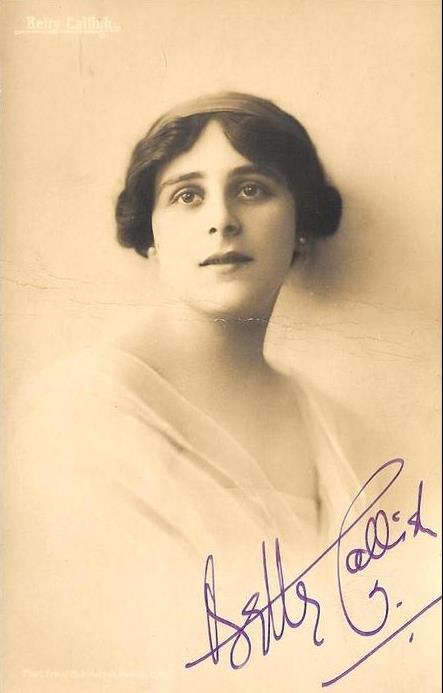
The Sketch
March 22, 1911
A 1916 interview with Callish in The Music News reported: "She is a beautiful brunette of fine stature, but what her eyes express is nothing less than charm, interesting as a "causeuse" and with her other gifts she is a most radiant personality.
"Miss Betty Callish was born at Baarn, Holland, of Jewish parents. . . At the age of 18 she debuted in London under Charles Frohman. In England she met with much success in Laughing Husband, an operette which met with the approval of the English audience... She made her American debut some three years ago in vaudeville...
"She was a protegee of Sarah Bernhardt and of her had learned acting... As a singer Miss Callish made her appearance under that distinguished leader, Arthur Nikish, in Berlin, being called by the German press the 'zunkunstinke sangerin.' She studied vocal with Goerster of Berlin, famous as a music master, and elocution with the celebrated French baritone, Victor Maurel... For six years she was taught violin by the great Dutch master, Wilhelmj. Pantomine and mimicry was taught to her by the well known Cavalazzi..."
A 1913 issue of The Kansas City Star noted Callish's resemblance to the opera singer, Geraldine Farrar, calling Callish the American singer's "double" due to similarities in height, build, complexion, and speaking voice. In a quote attributed to Callish, The Star continued: "The Crown Prince of Germany bowed to me once in Berlin. I wondered why this honor was bestowed and soon found out that he mistook me for Miss Farrar." The Star ended its article with the note that Callish sang in five languages, her voice a mezzo-soprano.
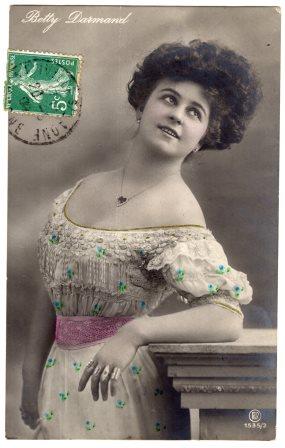
RPH 1535/2
An October 1907 issue of the German periodical, Die Woche, identifies Darmand as a French beauty on the German stage. Referencing her film career, a 1917 issue of Die Fackel describes Die Launen einer Modekönigin (The Whims of a Fashion Queen) as a film that gives viewers the opportunity to admire the well-known model, Betty Darmand.
Darmand is connected to Ernst Schneider through a 1911 credited photo in Das Weib
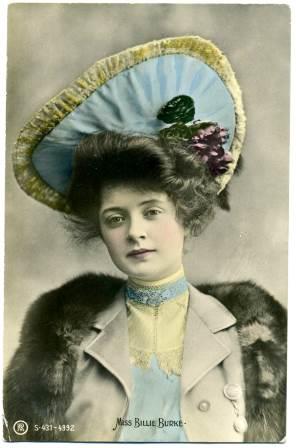
RPH 431
A 2009 biography, Mrs. Ziegfeld: The Public and Private Lives of Billie Burke, was written by Grant Hayter-Menzies.
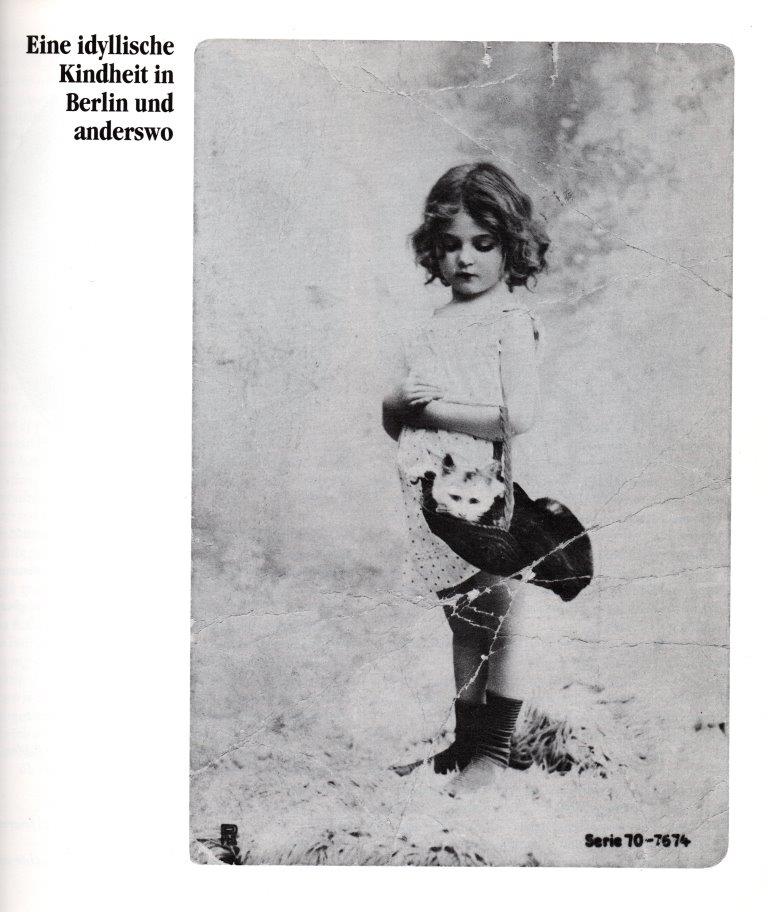
RPH Serie 70-7674
The daughter of actress Margarete Wezel and pianist Gustav Loeser, Ebinger was born on November 4, 1899 in Berlin and was later adopted by her mother's second husband, Dr. Ernst Ebinger. At age 7, she began an active artistic career, performing in children's roles on the stage. By 1915, she was acting in films.
In 1919, Ebinger began performing at the Berlin cabaret, Schall & Rauch. There she met composer, Friedrich Holländer, and they were married the same year. Ebinger became a well-known star of Berlin cabarets, playing in the musical shows of her husband. Heavily involved in the Berlin cabaret as a performer, writer, and composer, she intermingled film and cabaret performances through the 1920's and early 1930's.
Ebinger and Holländer divorced before Holländer fled to the United States in 1933 because of growing hostilities toward Jewish citizens in Germany. Ebinger also faced discrimination as a result of her marriage, much of which was directed at their daughter, Philine. Ebinger subsequently emigrated with her daughter to the United States in 1937 where she appeared in a few minor film roles.
After the war ended, Ebinger returned to Europe in 1946, stopping in Le Havre (France) 1946/47, Paris 1947, Geneve (Switzerland), and Zürich. Via Frankfurt she went to Berlin in 1948. After the death of her mother, Blandine moved back to the United States. There she starred in the 1958 "Fräulein." Returning to Germany again, circa 1961, Blandine moved to Munich where she met her second husband, the publisher Helwig Hassepflug. They married and eventually settled back in Berlin, where Blandine continued her career in the theater and as an actress in television productions.
Ebinger died on Christmas day in 1993 in Berlin.
This narrative was compiled from translations of a 1985 memoir by Ebinger: Blandine--" : von und mit Blandine Ebinger, der grossen Diseuse der zwanziger Jahre, der kongenialen Muse von Friedrich Hollaender. . ., published in Zürich by Arche Verlag, editors Raabe and Vitali. Identification of the child model was made from a postcard reproduced in the memoir -- RPH Serie 70-7674 -- captioned "Idyllic childhood in Berlin and elsewhere." Both the translations and the identification were made by Werner Mohr.
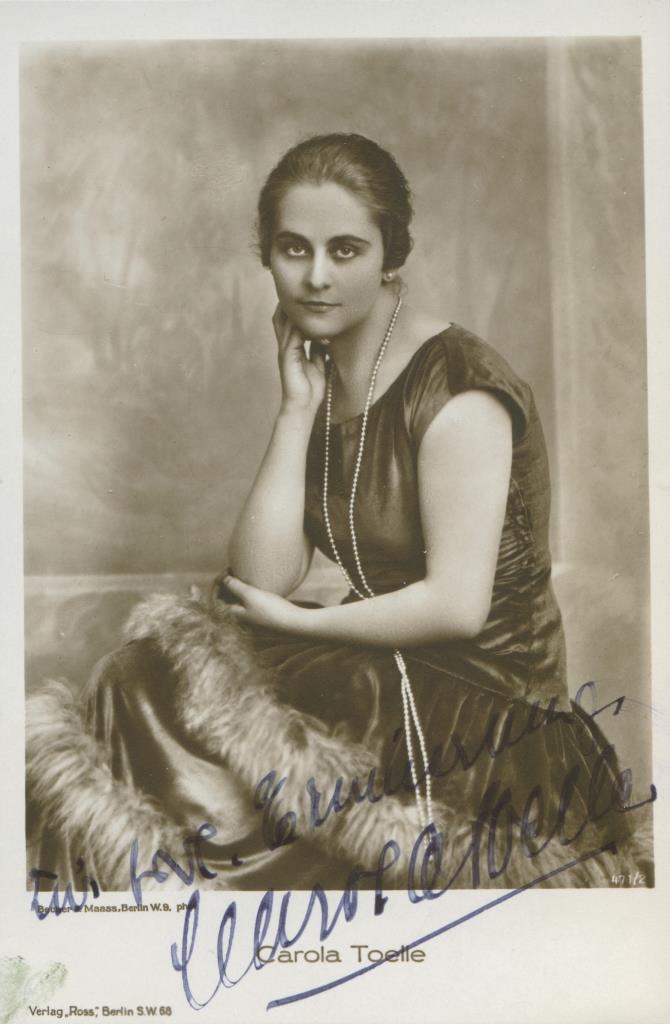
Ross Verlag 471/2
Wikipedia notes that Carola began working at the Deutsches Theater in Berlin in 1916 and went on to play leading roles in silent films in 1917. After several years, she left her film work and devoted herself entirely to the theatre.
Carola was married to the actor Ernst Stahl-Nachbaur. Her sister was the actress Uschi Elleot.
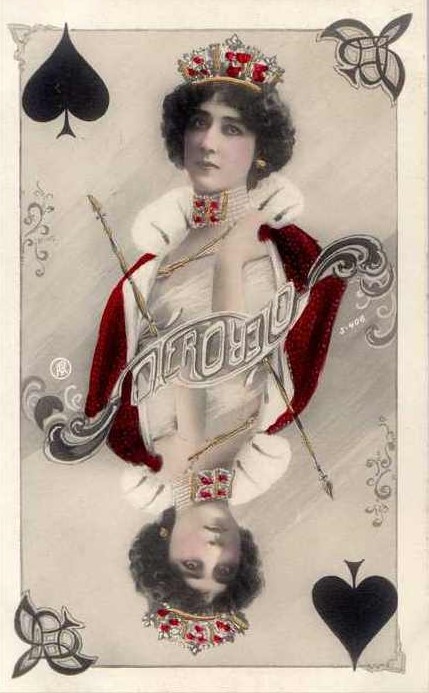
RPH 406
Two English language biographies are available: Charles Castle's 1981 La Belle Otero: The last great courtesan and Arthur Lewis' 1967 La Belle Otero.
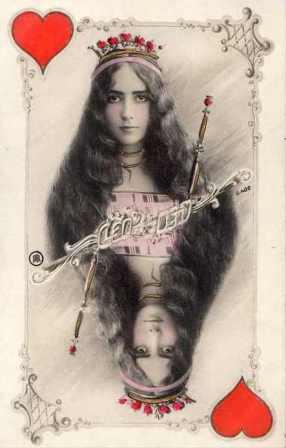
RPH 406
"When I would go dance in major cities abroad, what I noticed first of all were the racks, at newsstands and railway station bookshops, filled with postcards of me. If I ventured a few steps in the street, young girls would rush to buy these cards, and run after me, asking me to autograph them. This became such an obsession that often I gave up on going out, and preferred to stay shut away in my hotel room."
De Mérode's French language autobiography, Le Ballet de ma view, was published in 1955. Additionally, Michael Garval's Cléo de Mérode and the Rise of Modern Celebrity Culture, was published in 2012. Garval is Associate Professor of French Studies at North Carolina State University.
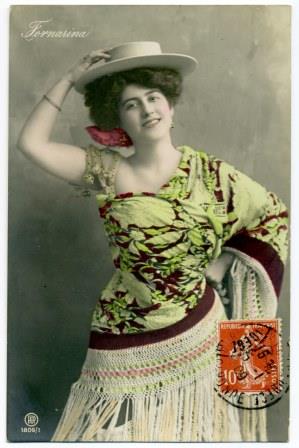
RPH 1806/1
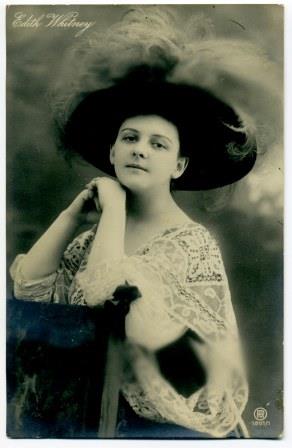
RPH 1801/1
Briscoe's 1907 Actor's Birthday Book provides Whitney's birthday and place of birth -- February 1 in northern Ohio. On-line news stories and genealogical records document Whitney's birth name as Edith Mae Caldwell. By 1902 she was known by her stage name, Edith Whitney, Whitney being her mother's maiden name.
At the turn of the century, Whitney began her stage career as a member of the Florodora sextette in Chicago. She next appeared in the New York run of The Chinese Honeymoon. Then, in November 1902, Whitney wrote to her father in Kansas, stating she was sailing from New York to Paris. Several news clippings of the time reported Whitney and two other young women had met three titled foreigners at a dinner in New York who told the women they ought to go abroad and get their voices cultivated. Within a week, the women set sail, with the men agreeing to foot the bills.
Whitney's time in Paris was a great success. She made frequent performance appearances and also appeared on dozens of photographic postcards. Subsequently making numerous transatlantic trips, Whitney appears to have made Paris her home, remarking in a 1904 interview, "I am in love with Paris, and I shall probably make it my home. American players and singers are treated so well there." Whitney married a Frenchman, Robert J. Baques, in 1910, and in 1925 she listed France as the country of her citizenship on a ship's passenger list.
An interesting advertisement for John Hogan's "Dancing Taught by Mail" system in a 1907 issue of The New York Clipper quotes Whitney: "I am playing an engagement in Berlin, at the Metropole. I owe my entire success to you, for it is you who taught me my dances. I also put two very pretty dances together with the aid of your mail teaching system... I should have been quite lost without the system, for I had forgotten some to the steps, but upon reading all the instructions and studying the positions of the figures, all the steps came back to me."
Other interesting news clippings tell of an extravagant, $150 a plate, holiday dinner held in Whitney's honor in December 1908 at the Knickerbocker Hotel in New York. The dinner was given by Monsieur Baques (Whitney's future husband) of London and Paris, with the entire drawing room floor of the hotel engaged. There were innumerable courses, a dozen brands of rare vintage wines, cigarettes especially imported from Russia and Turkey, and to crown it all a famous set of gold plate was used.
A transatlantic ship manifest from the time of Whitney's marriage lists her occupation as 'None' as do similar manifests from later years, and, indeed, newspaper booking notices for Whitney stopped around 1910. Family notes found on Ancestry.com confirm Whitney's French citizenship and tell that she was in the French Nurse Corp during WWI. Comments attributed to her younger brother suggest she became involved in the perfume business in France.
Ship passenger rosters have been seen for Edith Baques on Ancestry.com through 1925. A family record on Ancestry notes Whitney, then Edith Merrick, died in New York on November 5, 1935. New York Municipal Death records confirm this information. Her husband's name on the death record is Kenneth Merrick.
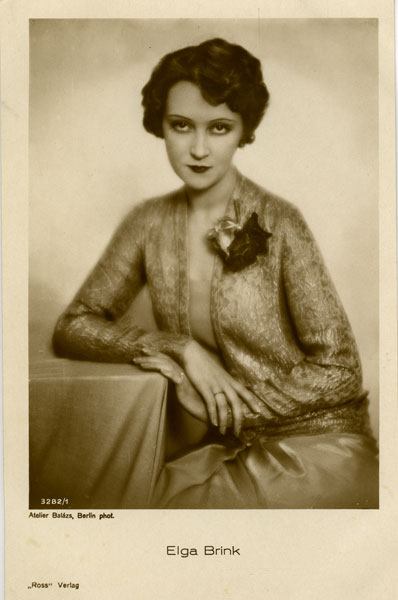
Ross Verlag 3282/1
The subject of brief biographical sketches at Wikipedia and filmstarpostcards.blogspot, Brink was a German actor of silent and sound films. Her career spanned the years of 1922-1951, during which time she appeared in more than 65 films. After retiring from the movies, Brink worked in a law office under the name Elisabeth Biermann.
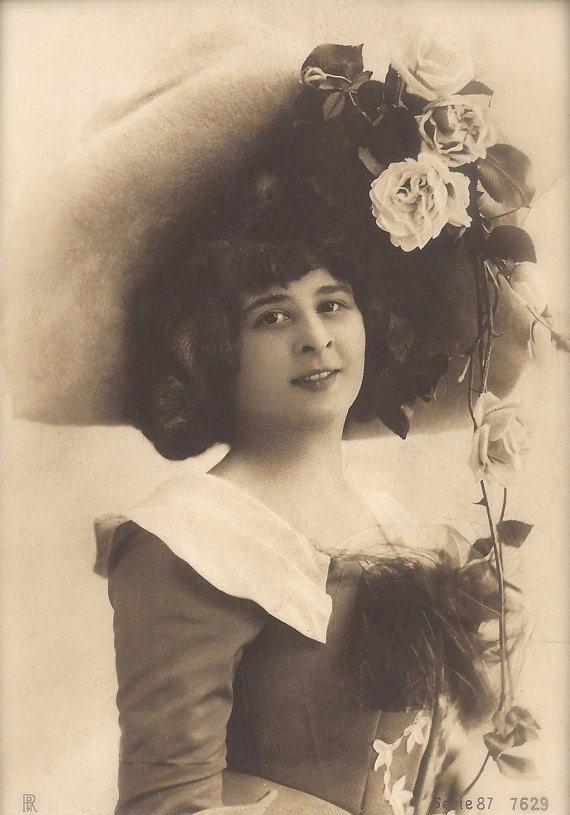
RPH 87
A 1903 issue of The Broadway Magazine includes a captioned photo of de Vère that reads: "The pretty young Frenchwoman has been engaged to star in a musical comedy during the season of 1903-4 under the management of Florenz Ziegfeld, Jr. Her English is not faultless, but she is credited with speaking it in a most entrancing manner. Mdlle. de Vere was one of the prize winners in the Parisian beauty contest a few years ago."
An 1899 issue of The Sketch, issued at the time of the Paris beauty contest described de Vère: "Everything about her charmed them. Her nose was not classical, but it suggested cheekiness and gaiety, and her mouth and eyes were so full of life and emotion that a corpse would have regretted death had he known of her existence. There was silk and satin and pair-horsed broughams outside the office with candidates for these much-searched-for prizes, but Elise de Vere came out with honours clad in very simple attire and with hardly a jewel on."
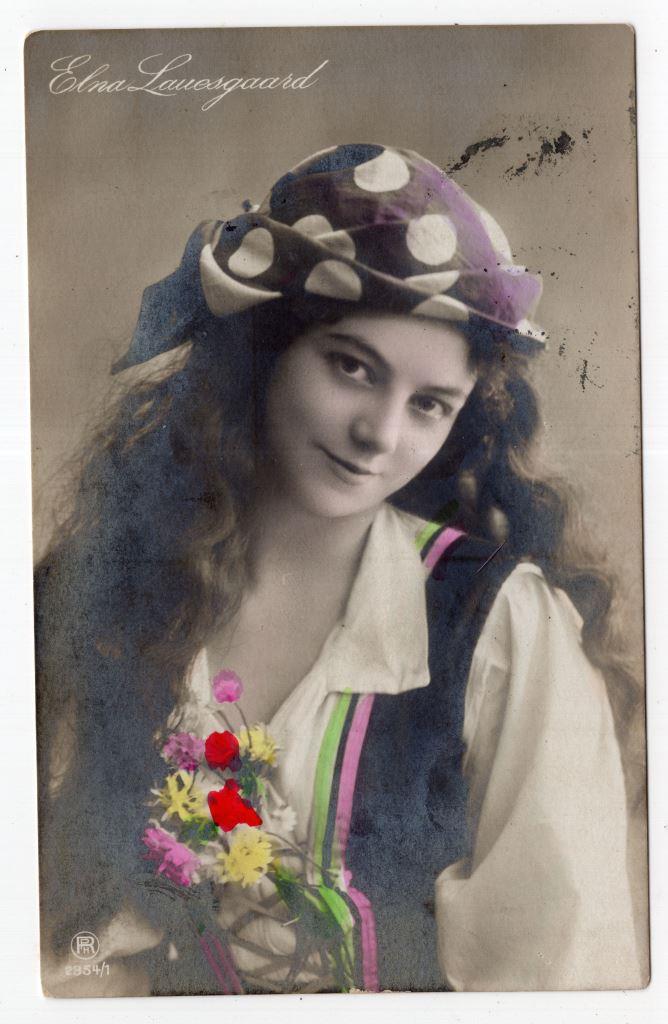
RPH 2354
Ørnberg, Grethe Ditlevsen, and one other ballet dancer were the models for Danserindebrønden (1912-13), a large bronze sculpture by Rudolph Tegner. The sculpture is in the gardens at Helsingør, Denmark.
Ørnberg is the subject of a wikipedia entry.
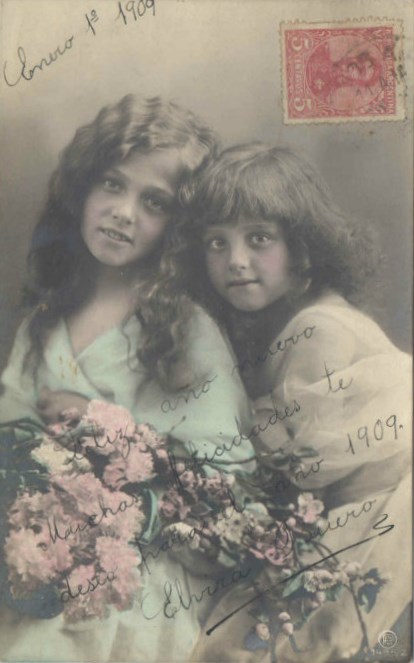
RPH 1495/2
(Elsbeth on right,
pictured with Irmgard)
Relocating with her family from Germany to Denmark during WWI, Elsbeth appeared with her siblings in the Danish film, Hvor Sorgerne glemmes. Following the family's return to Germany at the end of the war, Eddy's younger sisters became active in silent film, and it was while accompanying Hanni on a film at Tangermünde that Eddy met her future husband, the Russian-born composer, Mischa Spoliansky. Writing about his beloved Eddy, Mischa said, "She was very beautiful and slender, about 5’5” with dark blonde hair and blue eyes. I liked the fact that although she was always smiling, she had a gentle and introvert side too. We were very deeply in love with each other and spent as much time together as possible." Eddy and Mischa married in 1922; it was a marriage that lasted over six decades until their deaths in the 1980s.
In 1933, Spoliansky topped the Nazis' blacklist, not only because he was Jewish, but also because of the frequent satire he directed at Hitler and the National Socialists. When Eddy's sister, Grete, relayed a message from a well-intentioned Nazi official to "Tell your brother-in-law to leave the country as quickly as he can," Mischa, accompanied by Eddy's brother, Otto, fled across the Austrian border. Eddy followed with their three daughters the next day. From there, the family emigrated to London where Spoliansky was taken under the wing of the expatriate and British film communities. With his second career as a film composer, Spoliansky became world-renowned.
The Spoliansky's grandchildren maintain The Mischa Spoliansky Trust at www.mischaspoliansky.com and generously shared the source of this information.
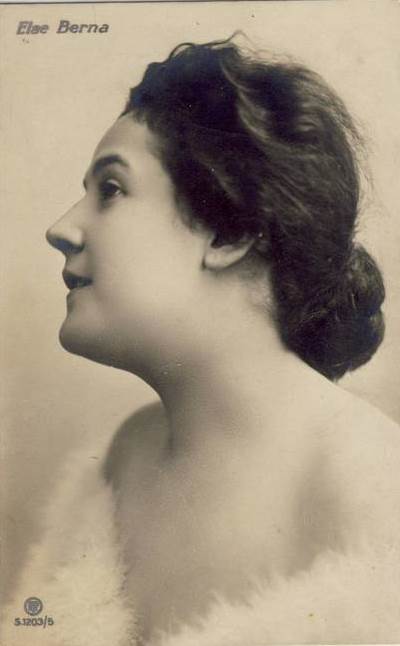
RPH 1203/5
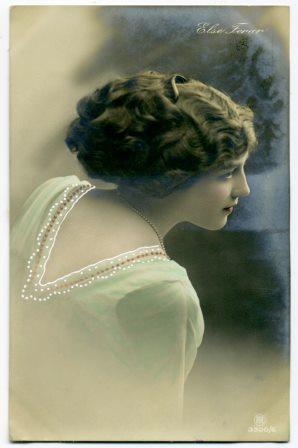
RPH 3300/6
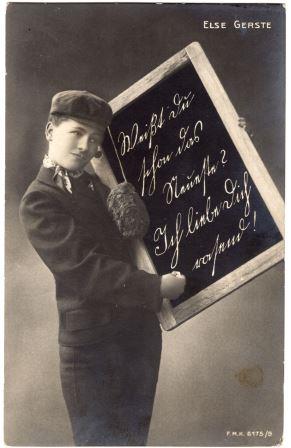
FMK 6175-9
Gerste is listed with the Berliner Vaudeville-Ensemble (Haller-Ensemble) in the 1907 Neuer Theater Almanach and the Lustspielhaus in the 1908 Almanach. She also is credited as "Elli, the daughter" in a playbill for the Schiller-Theater N. production of Der Familientag, a comedy in three acts by Gustav Kadelburg.
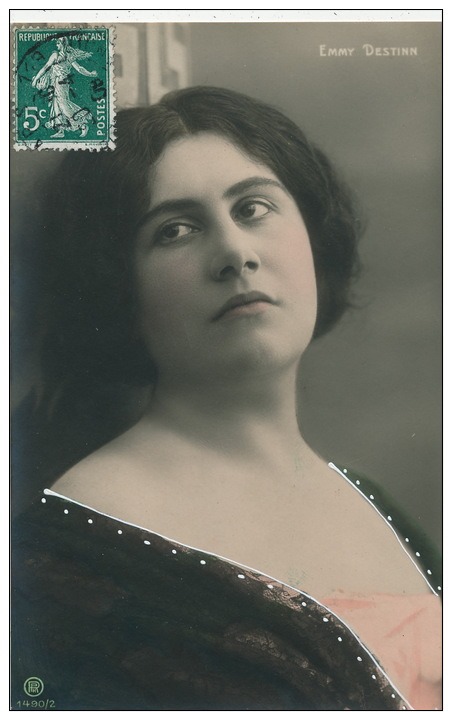
RPH 1490/2
Established in 1998, the Emmy Destinn Foundation at www.destinn.com supports young singers in the early stages of their careers. The foundation's website includes a biographical sketch of the soprano.
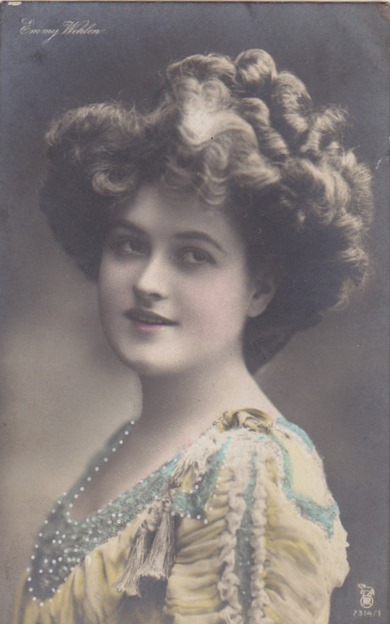
RPH-Ross
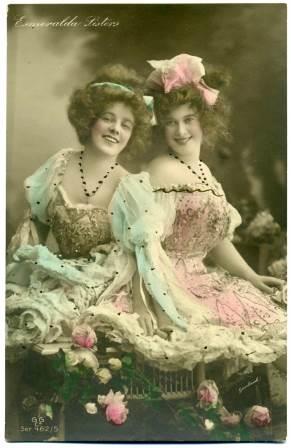
GG Co 465/5
In 1907, the sisters left on a multi-year European tour where they performed in cities throughout the continent. Sadly, Mabel became ill while in Naples and was taken by her sister to Berlin where she was admitted to hospital and where she died on December 31, 1909. Broken hearted, Edna returned to Brooklyn, New York, where she spent time with friends before returning to the stage to perform.
Documentation of Edna’s performances in the United States was found through 1913 when her marriage to Harry L. Davison was announced. Although the announcement indicated Edna would continue to perform, no billing notices were found for her after 1913. Edna’s name was, however, listed with dozens of others on a 1919 Christmas greeting in Variety to the managers of the Strand Theatre in New York, suggesting a continued association with the stage. In addition, the name Edna Esmeralda reappears in the notices for a number of New York productions in the 1920’s. Harry's 1921 obituary notes that Edna was performing in vaudeville with Harry Puck and Co. Her date of death is unknown.
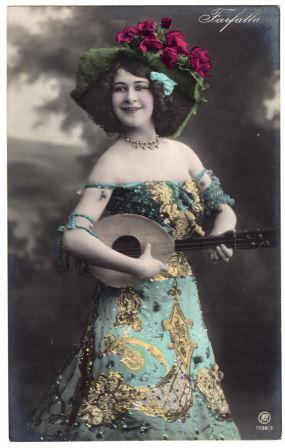
RPH 1738/2
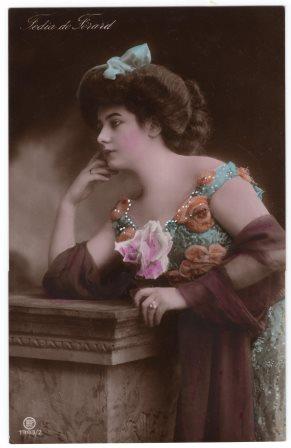
RPH 1993/2
Ferard and Benatzky, a composer of light operettas, musical reviews and film music, married in 1909 in Vienna. The marriage ended in divorce by 1914 when Benatzky married cabaret singer Josma Selim. During the period of 1911-1913, Benatzky and Ferard collaborated on more than half a dozen songs for the theater. Fritz Hennenberg's biography of Benatzky notes that among her admirers was Heinrich Mann, the German author. In a 1910 letter to Benatzky, Mann wrote he was "certain she will be triumphant everywhere, offering more than any other actress on a variety stage in every respect."
Several sources note Ferard was born in Grenoble in 1887 and that her actual name was Eugenie 'Ninon' Decloux. Other stage names associated with her are Fedi and Fedy Férard.
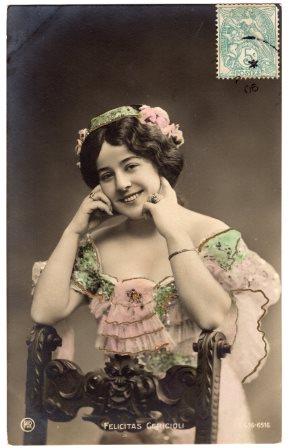
RPH 696
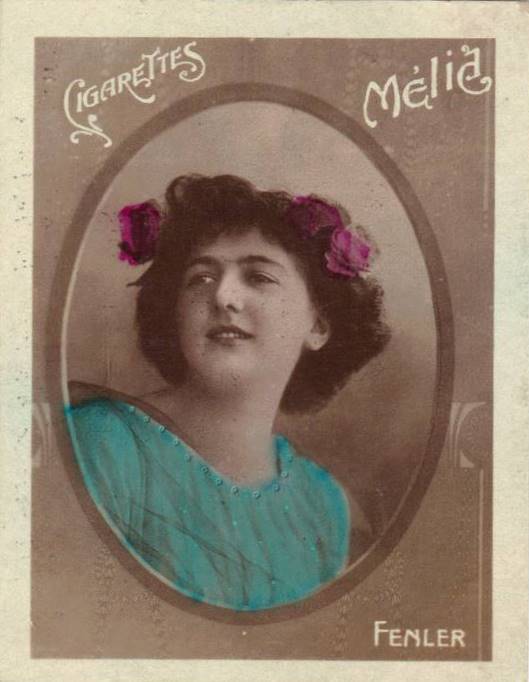
Mélia Cigarette Card
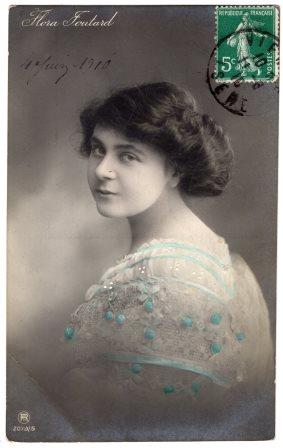
RPH 2079/5
Musical periodicals from France and Germany document numerous recitals and concerts performed by Flora and her sister. One of the earliest, from 1905, cites Flora's age as 17. The notices continue through 1910. In later performances, Flora is referenced by her married name, Flora Joutard-Loevensohn, Flora having married Marix Loevensohn, the cellist with whom she often performed. A 1915 article about Loevenshon cites one of his primary achievements in establishing a chamber music organization devoted exclusively to modern music -- the famous Loevensohn Concerts. Flora was one of the principals. They gave twenty-four concerts in the first season, 1910, at the end of which Flora died.
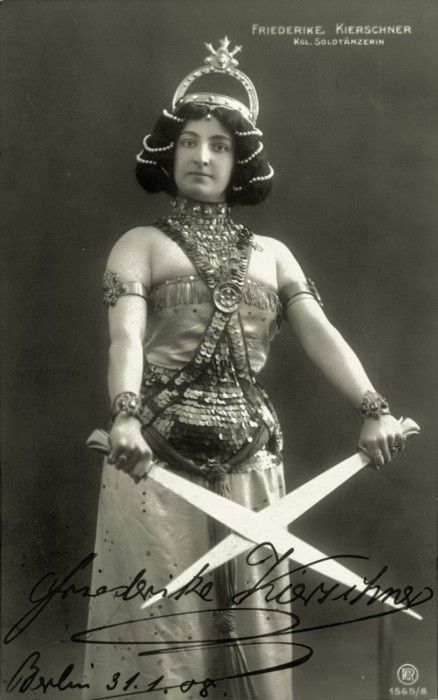
RPH 1565/6
Additionally a historical summary of German dance artists in the Velhagen & Klastings (1910) included a brief paragraph about Kierschner:
"Miss Kierschner demonstrated a great talent, verve, fire and extraordinary ability in all kinds of spirited and expressive character dances, especially those of a special national character. Visitors to the opera house admired one of her most magnificent appearances in a brilliant performance of Verdi's newly rehearsed opera "Aida": the sword-dance of the Egyptian slave before the princess, presented by Kierschner with stunning verve and astounding art."
The RPH card at 1565 depicts Kierschner in the sword dance from Aida.
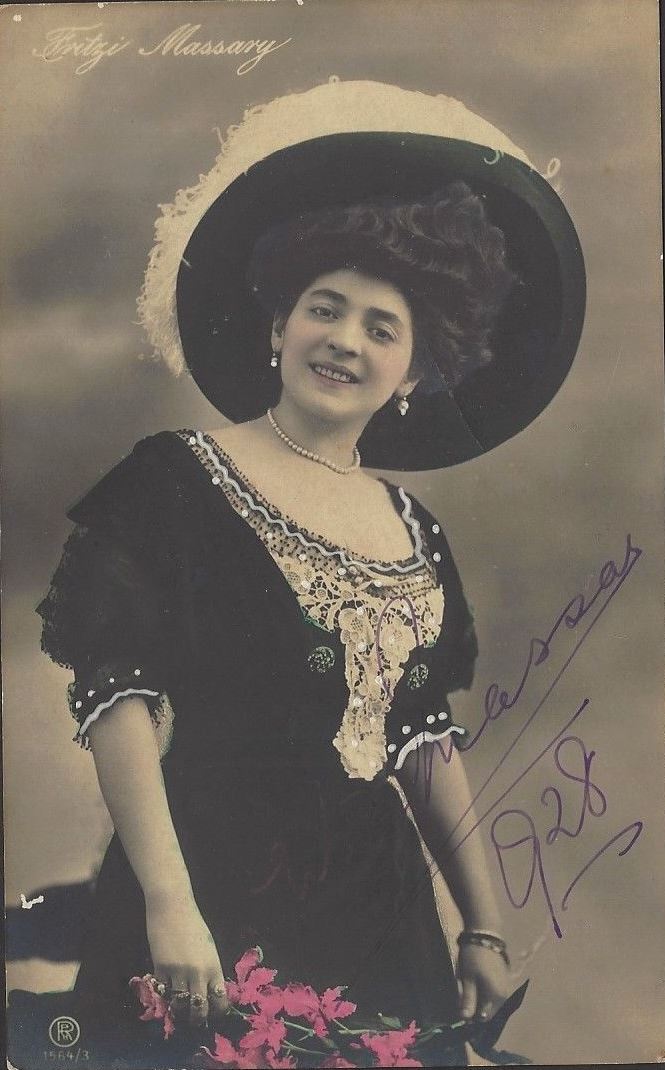
RPH 1564/3
Massary is the subject of a biography on the Jewish Women Archive at jwa.org and Wikipedia.
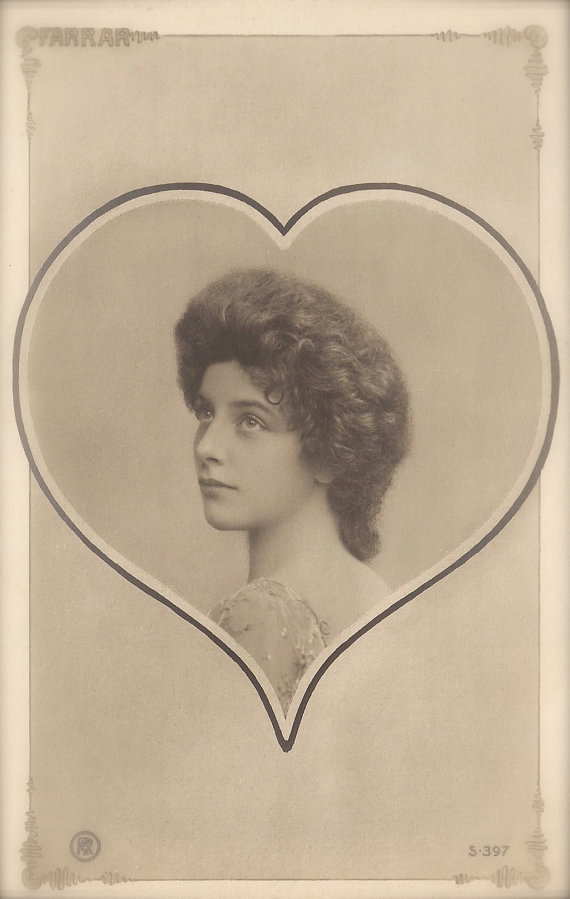
RPH 397
Noted for her beauty as well as her voice, Farrar had a large following among young women who were known as "Gerry-Flappers." Farrar also appeared in silent films during the period of 1915-20.
Farrar is the subject of a biographical sketch on Wikipedia with numerous notes and several sources listed. Her 1916 autobiography is available at Project Gutenberg. Farrar wrote a second autobiography in 1938.
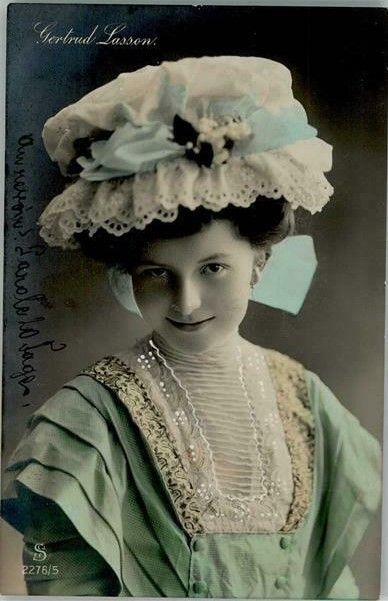
SLJFF 2276/5
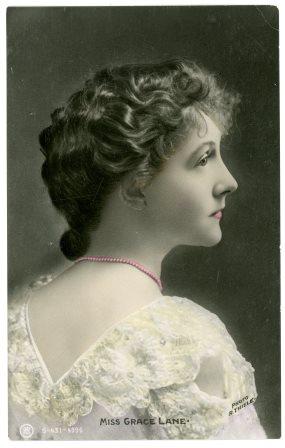
RPH 431
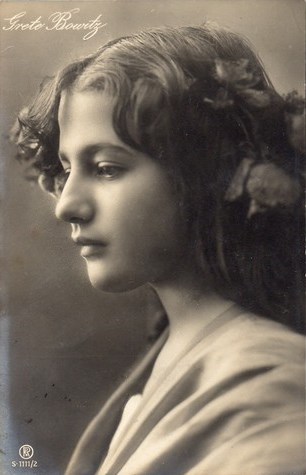
RPH 1111/2
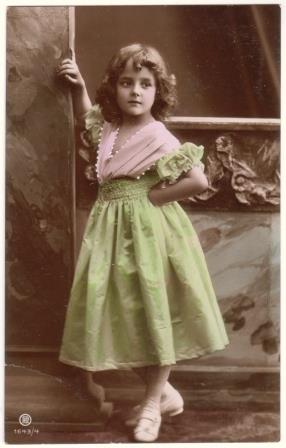
RPH 1643/4
In addition to being a tremendously popular child model, Grete also performed on the stage and in silent films from an early age. She accompanied her family to Denmark for the duration of WWI where she appeared in several films. Returning to Germany after the war, Grete reappeared on the scene, graduating from children's roles to adult supporting and then leading roles, performing in more than 70 silent films, and continuing to appear on the stage. Grete made the transition to sound films in the early 1930's, acting in secondary and minor roles in about 20 films through the war years, ending in 1957.
In 1933, with the rise of the Nazi party, Grete appeared in the film, Hans Westmar. Initially banned by Goebbels, the film was released only after substantial cuts. After the war, the film was added by the Allies to the Catalogue of Forbidden German Feature and Short Film Productions, prohibiting exhibition in Germany as “purely party propaganda.”
Grete married her first husband, Gustel Sensburg, in 1921. Their son, Wilhelm August was born in 1924. Following the death of her first husband in 1932, Grete remarried Fred Louis Lerch, a fellow actor. They remained married until Grete's death in 1983.
Grete's sister, Elsbeth (Eddy) was married to the Russian-born composer, Mischa Spoliansky. Describing his family's flight from Germany to escape the Nazi's, Mischa wrote: "Soon after Eddy’s sister, the beautiful film star Grete Reinwald, brought us a message from a well-meaning high-ranking Nazi. He’d said to her 'Tell your brother in law to leave the country as quickly as he can.'" Taking this warning from Grete seriously, Mischa escaped to Austria the very next day. The following day Eddy and their daughters followed. From Austria, the Spoliansky's emigrated to London where Mischa continued his work as a world renowned composer.
The Spoliansky grandchildren maintain The Mischa Spoliansky Trust at www.mischaspoliansky.com and generously shared the source of this information.

RPH 2185/1
Ditlevsen, Elna Jørgen-Jensen/Ørnberg and one other ballet dancer were the models for Danserindebrønden (1912-13), a large bronze sculpture by Rudolph Tegner. The sculpture is in the gardens at Helsingør, Denmark.
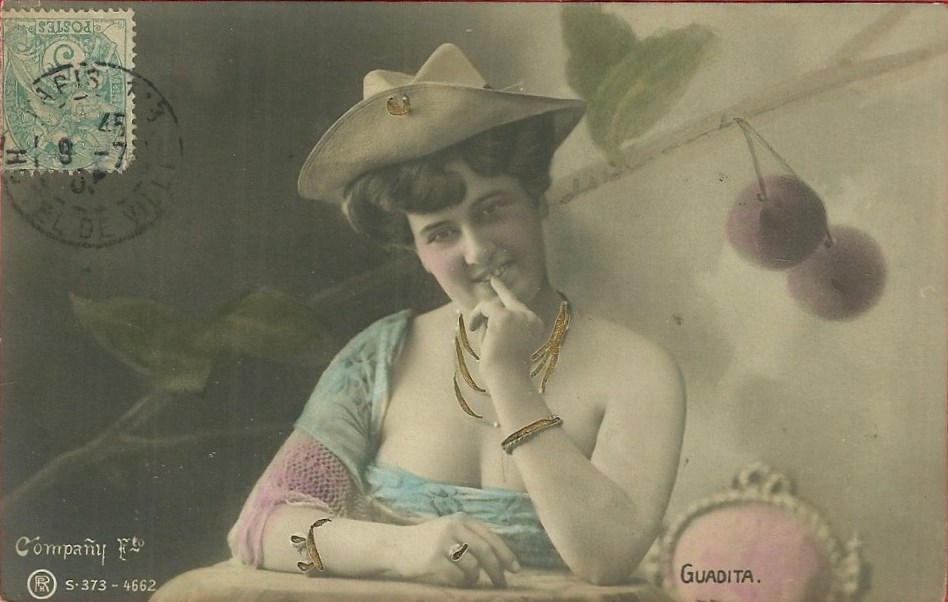
RPH 1822/6
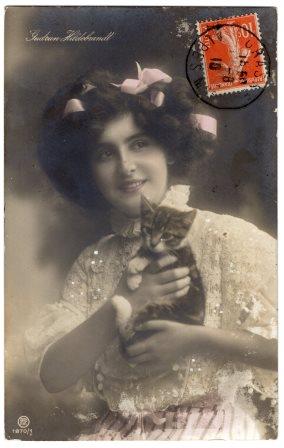
RPH 1870/1
Hildebrandt married Benedikt Marx, a member of the Social Democrat Party. In her biography of Jeannette Marx (Benedikt's niece), Frenchy: I Wanted to Get Back at Hitler, Tracey Shaler wrote, "Benedikt and Gudrun, under the real threat of death, fled Germany [to England] shortly before Hitler was made Chancellor and the Nazis took complete control of the Reichstag."
A full page advertisement in the 1910 Neuer Theater Almanach includes a photo of Hildebrandt by Ernst Schneider, along with a large print caption that reads:
Gudrun Hildebrandt -- The world-famous dancer and actress and recipient of the gold medal for art and science for her art, youth and beauty -- Millions of her postcard images are on the market -- Brings her heraldic full-length dance and recitation program to performances before royalty, in city theaters, and in domestic and foreign venues.
Hildebrandt's book, Gudrun Hildebrandts Mode-Tanz-Buch: Grammatik der Modernen Tänze was published in 1920.
Truus, Bob & Jan too! on flickr.com provide a brief biographical sketch of Hildebrandt.
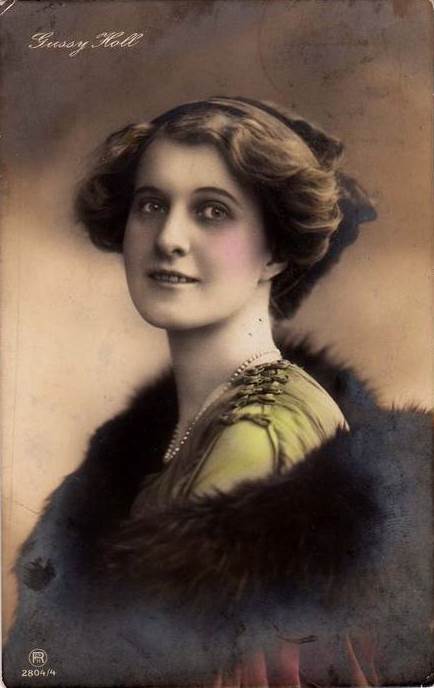
RPH 2804/4
In their 2005 book, Practicing Modernity, Schönfeld and Finnan quote the journalist, satirist, and songwriter, Kurt Tucholsky, in his description of Holl: "Unlike any other German artist, this rare and glorious woman is qualified and destined to be the great political singer. I won't even mention her tremendous art of parody and her ability to flit over the most daring things with a gracious leap -- we are only interested in the artist who has more to say to a hall full of politically thinking people than ten journalists could."

Phillips British Beauties
No. 59
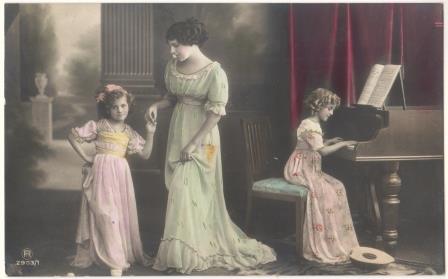
RPH 2903/1
Hanni was one of six Reinwald children, all of whom were involved in the entertainment industry. She and four of the other children (Irmgard, Elsbeth, Otto, and Grete) appear within the RPH series, often paired with one another. The eldest of the children, Julius, was a cinematographer who lost his life while filming in Africa.
In addition to being a popular child model, Hanni performed on the stage and in silent films from an early age, with more than 20 films between 1913 and 1929. She accompanied her family from Germany to Denmark for the duration of WWI where she appeared in several films. In a 1914 review in the Danish Filmen, the critic wrote: "Also contributing was a second person, whom one might feel compelled to call an even greater artist, and it is small Hanni Reinwald. This child performs with a sweet childishness and an endearing naturalness. Her unique performance ... is quite astonishing. We have seen many children on film - too many - and they have been more or less good, but it's rare that we have seen the naturalness of a child. There's this little girl, who even plays comedy, and whom you think is a little angel that has come directly from a pink cloud..."
Acting in a 1920 historical film with Ellen Richter, Eduard von Winterstein, and Adalbert von Schlettow, Hanni was accompanied to the filming at Tangermünde by her sister, Elsbeth (Eddy). It was there that Eddy met her future husband, the Russian-born composer, Mischa Spoliansky. Describing the first time he saw his beloved Eddy, Mischa wrote: We "headed off in the direction of the actors. It was the most wonderful sight. Two beautiful young sisters immediately caught my eye, one was dressed in costume, the other was her chaperone. I was completely blinded by their beauty and began to show off in the hope of making an impression... The two beautiful sisters that I was unable to ignore were, I discovered, Hanni and Eddy Reinwald."
The Spoliansky family later fled Nazi Germany and emigrated to London. Their grandchildren maintain The Mischa Spoliansky Trust at www.mischaspoliansky.com and generously shared the source of this information.
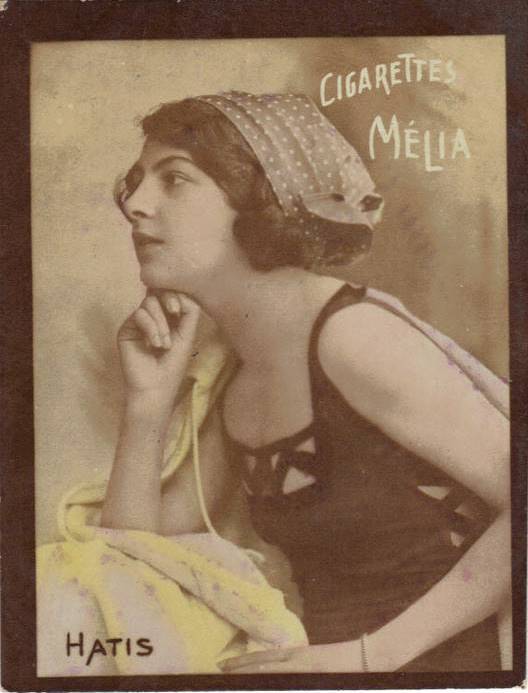
Mélia Cigarette Card
It is not known if the name is true or fictious. No other information has been found.
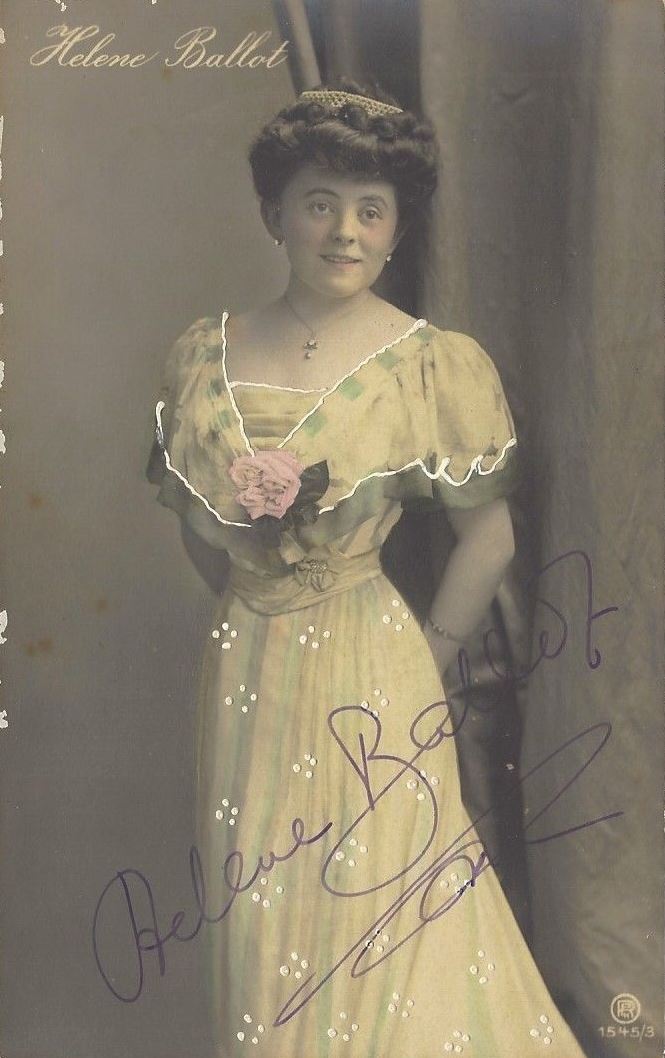
RPH 1545/3
A biographical sketch of the actor Karl Bachmann notes that Ballot was his first wife and that the couple met in Berlin in 1908 and married in 1919. Theatrical postcards show the pair in performances of Die Reise um die Erde in 40 Tagen and Die Kino-Königin at Berlin's Metropol Theater
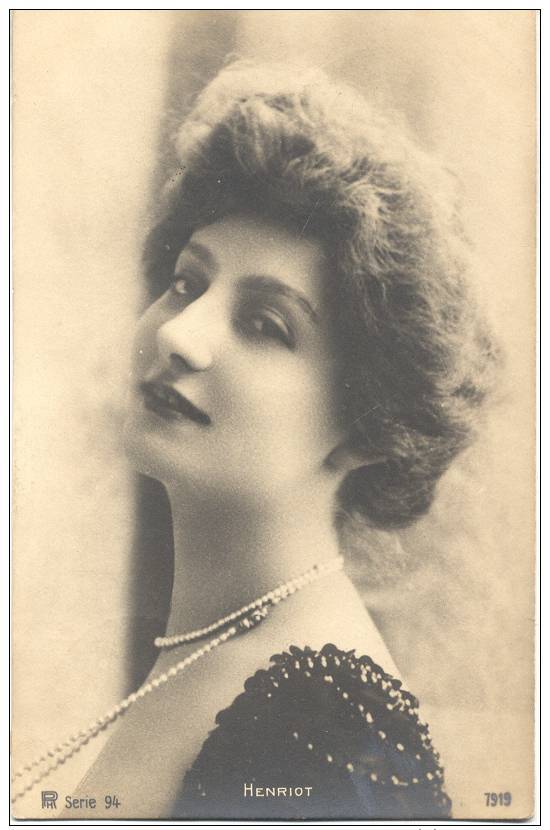
RPH 94
Henriot's grave at Passy cemetery in Paris is inscribed with the words of French writer, Émile Faguet: "... Elle est venue, Elle a souri, Elle a passé!..."
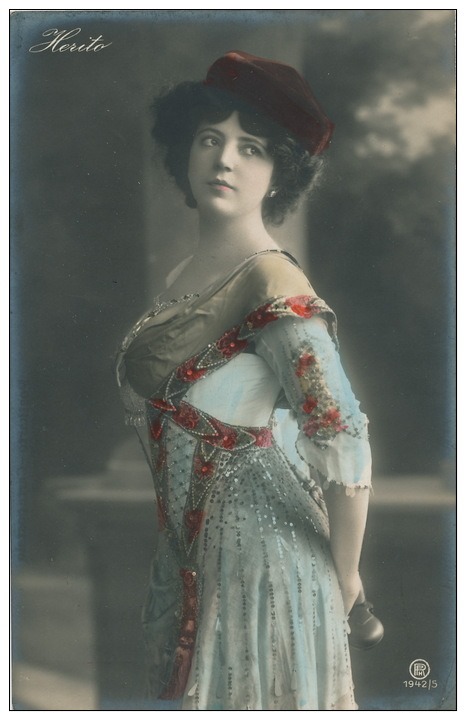
RPH 1942/5
A 1909 issue of The Sketch headlined Surith as an "Exponent of Oriental Baccanalian Veil Dances," while another popular magazine, The Playgoer and Society Illustrated described Surith's dance with a live python before a shuddering audience, bringing realism to the stage with a vengeance. After performing as a belly dancer and snake charmer, Surith went on to have her entire body tattooed and took on the stage name Mademoiselle Burilian, performing at circus sideshows in the U.S. and Europe. A brief biographical sketch of Surith can be found at postkarten-archiv.de under Tattoos.
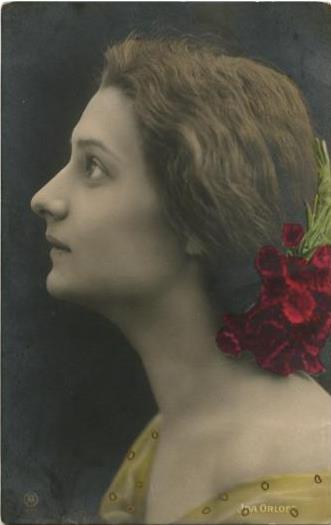
RPH 875-
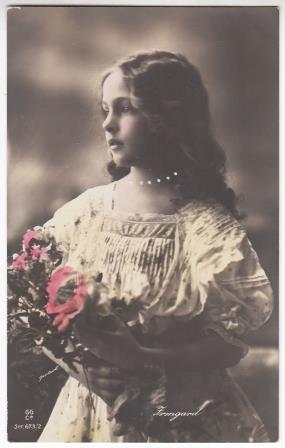
GG Co 673/2
Irmgard was one of six Reinwald children, all of whom were involved in the entertainment industry. She and four of the other children, Elsbeth, Otto, Grete, and Hanni appear within the RPH series, often paired with one another. The eldest, Julius, was a cinematographer who lost his life while filming in Africa. Irmgard was a talented and elegant ballroom dancer. Additionally, her performance in two silent films in 1925 is documented on filmportal.de.
Irmgard's sister, Elsbeth (Eddy) was married to the Russian-born composer, Mischa Spoliansky. Describing his sister-in-law, Mischa called Irmgard, "Eddy’s endlessly kind and generous sister." The Spoliansky's named their eldest daughter, born while they stayed in Irmgard's beautiful Charlottenburg flat, after her.
The Spoliansky grandchildren maintain The Mischa Spoliansky Trust at www.mischaspoliansky.com and generously shared the source of this information.
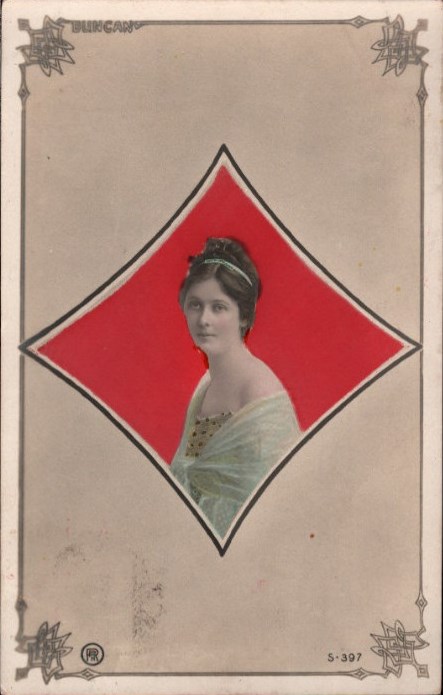
RPH 397
"Isadora Duncan (1877-1927) was an American pioneer of dance and is an important figure in both the arts and history. Known as the 'Mother of Modern Dance,' Isadora Duncan was a self-styled revolutionary whose influence spread from American to Europe and Russia, creating a sensation everywhere she performed. Her style of dancing eschewed the rigidity of ballet and she championed the notion of free-spiritedness coupled with the high ideals of ancient Greece: beauty, philosophy, and humanity. She brought into being a totally new way to dance..."
The biographical sketch at www.isadoraduncan.org is illustrated with a number of Duncan's dance photos.
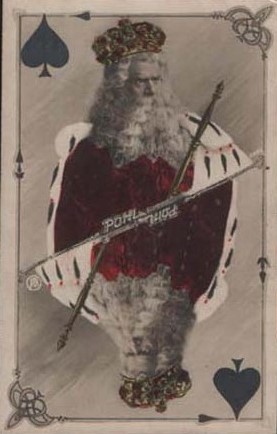
RPH 404
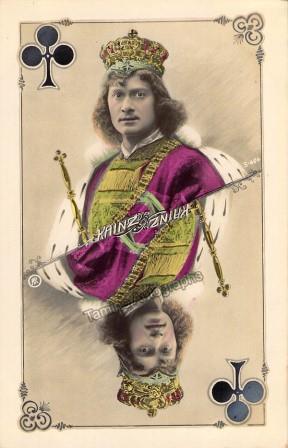
RPH 404
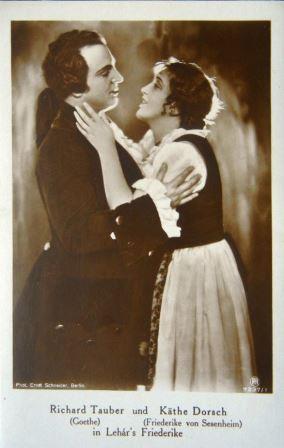
RPH 7237/1
Dorsch was a German actor who appeared on the stage and in silent and sound films. Dorsch's first engagement was as a choir singer at age 15 in the Staatstheater. She went on to perform on the stage, most often in operettas from 1908 through the 1940's. Dorsch silent film career began with a small supporting role in a 1913 film and continued through 1921. After a long break, she began to appear in sound films from 1931 through the late 1940's.
Distancing herself significantly from National Socialism and the racist political culture, Dorsch reportedly used a friendship with Hermann Göring to intervene on behalf of threatened and persecuted colleagues during WWII.
In the 1920's, Dorsch was married to the popular actor Harry Liedtke. The marriage ended in divorce. Even after their divorce, however, the two still lived next to each other. In 1945, Liedtke was killed by Russian soldiers during WWII.
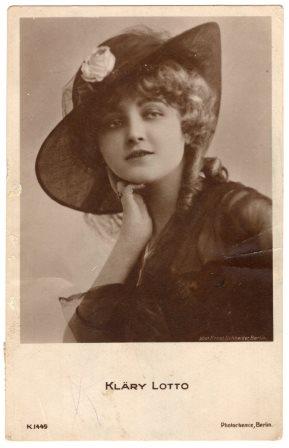
Photochemie K.1449
Lotto was born on 23 September 1893 in Casekow and died suddenly of a stroke on 26 August 1952 in Berlin. Before becoming an actor, she was a dancer as well a popular photo model. Lotto acted in German and Hungarian films during the years of 1916 to 1933, appearing in approximately 60 films, often with her husband, Carl de Vogt, whom she married in 1922. All but one of Lotto's films were from the silent film era.
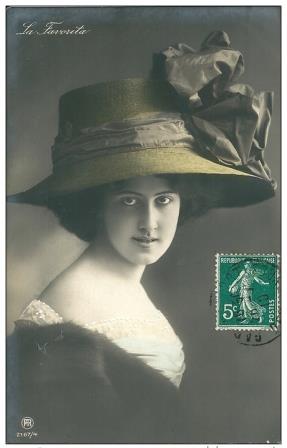
RPH 2167/4
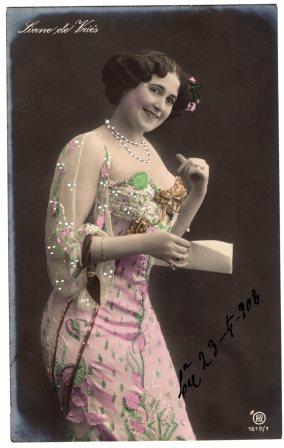
RPH 1619/1
A number of descriptions of de Vries' performances exist in on-line copies of period sources. For example, a 1938 biography of William Le Quex noted:
"Henri Jurgens, the well-known impresario, who lived in the Rue des Petits Champs in Paris, was a friend of Le Queux... He informed Le Queux that a few days previously he had discovered two girls singing and dancing at a cafe in Marseilles and that they were also to dine with him, prior to his giving them a trial at Olympia... Jurgens urged the girls not to be nervous at the prospect of appearing before a Paris audience, assuring them that it would be no more critical than at Marseilles. The elder girl was a dancer and the other a cafe singer... The dance was Spanish and was accompanied by castanets, and the singer sang two chansonettes in a splendid voice. The dancer was afterwards known as La Belle Otero and the singer was Liane de Vries. They became the rage of Paris and London and earned large salaries."
In the 1912 Metropolitan Magazine, Charles Belmont Davis also described de Vries' performance, this time in Florence in the late 1890's:
"It was high noon and Mlle. Liane de Vries, looking very beautiful in a large black picture hat and leaning back in the cushions of her victoria, passed on the way to her morning drive in the Cascine. Mlle. de Vries was then in her twentieth year and her figure was then very slight and her lovely face wore a wistful, innocent look of youth, which was lacking a little later when she became one of the celebrities of Paris. Her salary was thirty francs a performance in those days, but in the short week that she had been with us at the Trianon, her shocking songs and still more shocking dresses were the talk of the town and the favor of her smiles was much sought after by the young men of Florence."
And finally, from the 1913 Uber die Schönheit hässlicher Bilder:
"Then Liane de Vries appeared... (A friend told me that he could not sleep the night after he saw her) ... Music. I close my eyes. And then I see her, she stands there on the stage, and I hear her, and it is the language, the language of Flaubert. There she stands, as I have always imagined the Parisian of my dreams. There she is, and it is no disappointment; no, rather it was the expectation that was a disappointment, for I should have expected her more longingly ... Her hat, her gown, and many real pearls -- a harmony... She is beautiful and so luminous that others are lit by her reflection... Now she distributes flowers and is simply what she is, without song: a beautiful, kind-hearted, clever woman, an activist of the universe. At the end she bows deeply... with a collective kiss which she blows into her hands and releases."
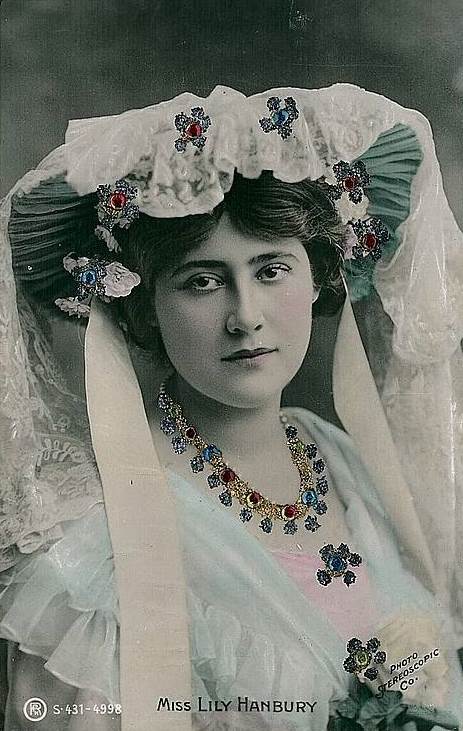
RPH 431
Married to Herbert Guedalla in 1905, Hanbury died in March 1908 of medical complications following the delivery of a still-born child. Following cremation, Hanbury's ashes were interred at the Jewish Cemetery at Willesden, England.
Reporting Hanbury's death in the Round the Theatres column of the Illustrated Sporting and Dramatic News, 'Vedetie' wrote: "But for myself, I always thought her earnest emotional manner and her impressive presence exhibited to the best advantage in classic drama, either ancient or modern, such as Julius Casar or Ulysses.
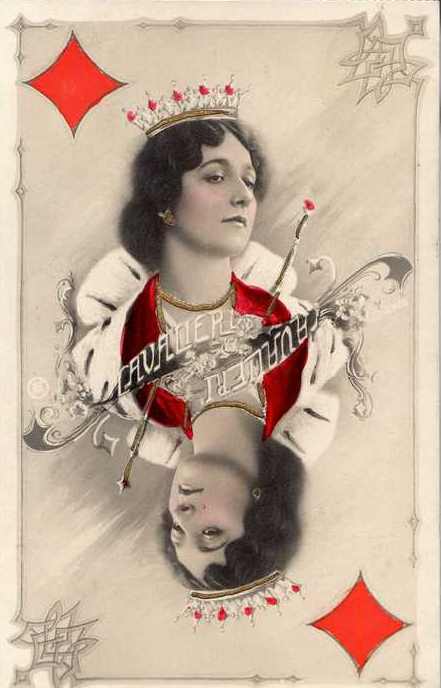
RPH 406
Fryer and Usova's 2003 biography Lina Cavalieri: The Life of Opera's Greatest Beauty includes programs, posters, photos, and excerpts from period reviews.
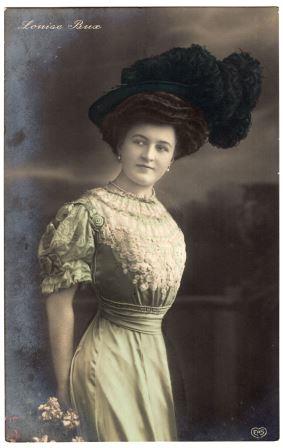
EAS 1153
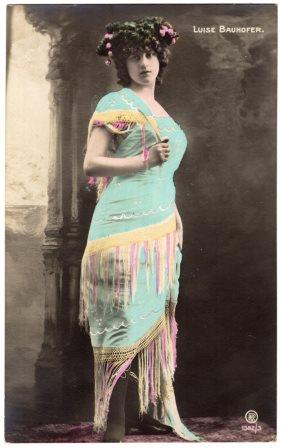
RPH 1382/3
The 1907 Münchener Stadtanzeiger und Münchener Ratschkathl included a brief review of one of Bauhofer's dances on the vaudeville stage in July of that year: "Luise Bauhofer, a well-known dancer from Munich, dressed up in magnificent costumes to perform a transformation dance with great grace in her movements."
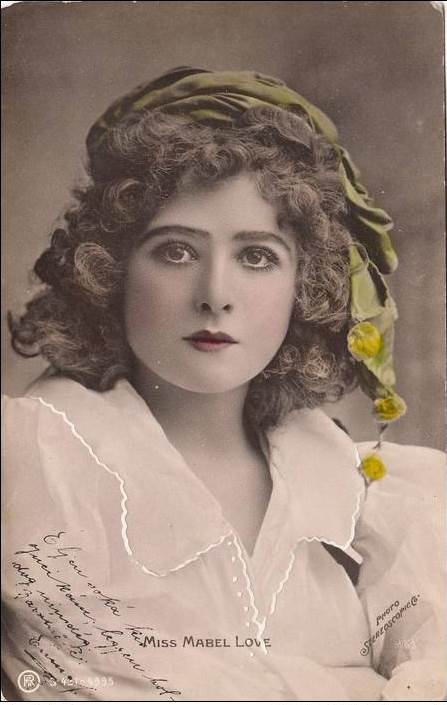
RPH 431
This narrative about Love was extracted from Don Gillan's (Copyright) www.Stagebeauty.net. Additional details about her may be found there.
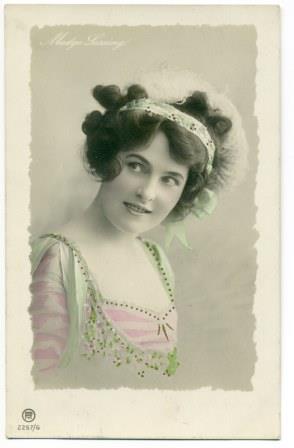
RPH 2257/6
One of the earlier references found for Lessing, an 1895 issue of Munsey's Magazine, notes she "came [to New York] from London ... to be a chorus girl at Koster & Bial's. She remained in that humble position only a week, being promoted at one step to the title role in the burlesque Belle Helène. Not long after, Lessing secured the principal role in Jack and the Beanstalk, establishing herself as a burlesque star. In a 1901 interview with The Sketch, Lessing described herself with: "I have always loved to sing and dance long before I had any idea of going on the stage, and since I did so I have been always engaged in musical comedies or in comic opera."
Notices of Lessing's performances on stage continue into the 1920's. Her film career notices span the years 1913-16. Several of the notices relate amusing incidents surrounding Lessings career. Among them was an article in the 1897 Boston Herald under the headline: "Madge Lessing's Smoking -- She Puffs Cigarettes Merely as a Matter of Business -- Her First Attempt to Comply with the Requirements of Her Part in 'Jack and the Beanstalk' Made Her Sick, and She Cried -- Now She Uses a Special Brand." Several paragraphs long, the article ends with a description of the theater manager's solution to the problem in sending Lessing a "box containing a thousand dainty cigarettes, made of tobacco of the color of the lightest flax, with a gold foil mouthpiece, and on each was stamped in gilt the words, 'Expressly made for Madge Lessing.'"
In another clipping, this one from a 1921 Philadelphia Inquirer, Lessing describes her entrance onto the stage: "I was born in London ... of Irish parents. My real name is Margaret O'Donnell -- that is, I was christened Margaret, and my family name is O'Donnell. Both father and mother came from Dublin. My parents came to the United States when I was ten, and they sent me to convent school here. I made my first appearance on the stage when I was fourteen, and it was then that I took the name of Lessing. You see my father and mother had died shortly after coming to New York; and my uncle and aunt adopted me. They thought the convent school the best place for me; but I believed the stage would be a far better one. So I decided to try it, and to my delight the first manager I saw took me on. So then no more convent school for me."
The year of Lessing's birth is uncertain. Present day websites cite the year 1866, but on her passport applications Lessing wrote the year 1882. Interview notices within periodicals suggest it may be a date between the two, although 1882 seems more likely than 1866. For example, a 1902 issue of The Sketch reports, "Her first appearance was made nearly ten years ago -- that is to say, in her very early teens." Lessing married George B. McLellan, a theatrical manager, in 1904, and they remained married until his death in 1932. While current day websites also provide a 1932 year of death for Lessing, newspaper clippings from 1942 document Lessing's appearance at that time as a guest at a friend's home.
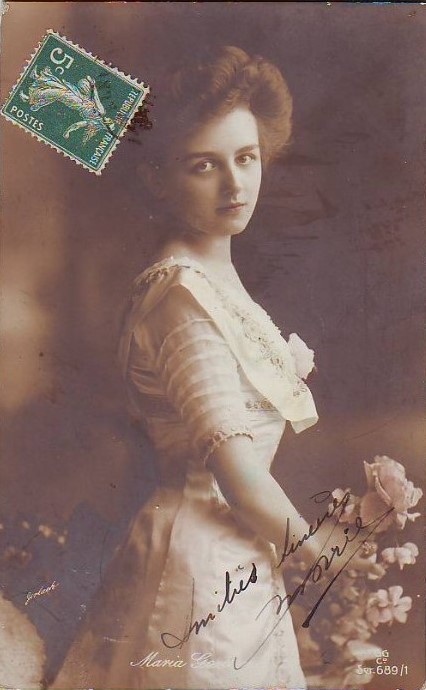
GGCo 689/1
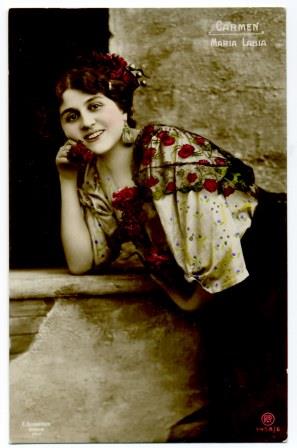
RPH 1458/6
Labia started by giving concert recitals in Vienna and later went on tour. While she was in Sweden, the director of the Royal Opera persuaded her to undertake a career in opera. Her first operatic performance was in 1905 in Stockholm as La bohème's Mimi. Two years later she joined the Komische Oper Berlin, and then in 1908 Oscar Hammerstein's Manhattan Opera Company in New York. Returning to Europe, she appeared in several theaters under independent contracts. In 1912 she joined La Scala in Milan, and in 1913 the Paris Opéra.
Suspected of spying for the Germans during WWI, Labia was arrested by the secret police in Milan soon after Italy entered the war. She was held as a military prisoner for more than a year and was released only after she succeeded in proving her complete innocence. Labia resumed her career, performing with more frequency in Italian theaters.
Around 1930 Labia devoted herself to teaching. When she taught at her villa in the Val di Sogno on Lake Garda, her famous voice could be heard demonstrating vocal exercises and techniques.
A 1958 issue of Record News described Labia as "a slim and supple young woman with a luminous face. She was born, reared and educated in the traditions of one of the oldest and noblest families of Venice. This did not, however, make her any less aggressive or feline, nor any less electric and earthy ... She had Tosca, Carmen and Santuzza in her blood as well as in her throat -- above all Tosca. Floria's impulsiveness and hot blood dominated her in real life as well as on the stage. On the other hand, certain light touches of irony and the graceful mischief which here and there coloured the accents of Muni and even of Floria, reached also the stage of her life... It was a lyric soprano, not large but clear, ringing, and flexible which, no less than her stage sense, contributed to her immediate success."
Biographical sketches are presented on Wikipedia and at http://www.treccani.it
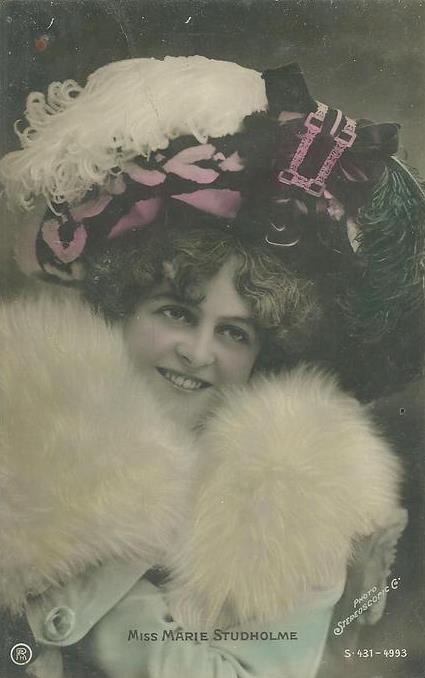
RPH 431
Studholme's attractive features made her one of the most popular postcard beauties of her day. She reportedly charged a sixpence to autograph her postcards, giving the proceeds to animal and theatrical charities.
Studholme died at her home in London in March 1930 following a short bout with rheumatic fever. She was survived by her second husband and adopted children.
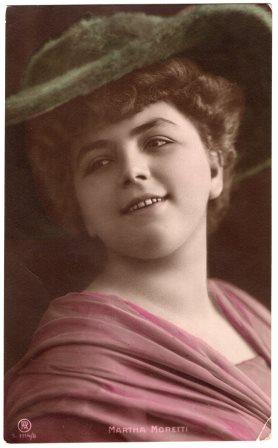
RPH 1114/8
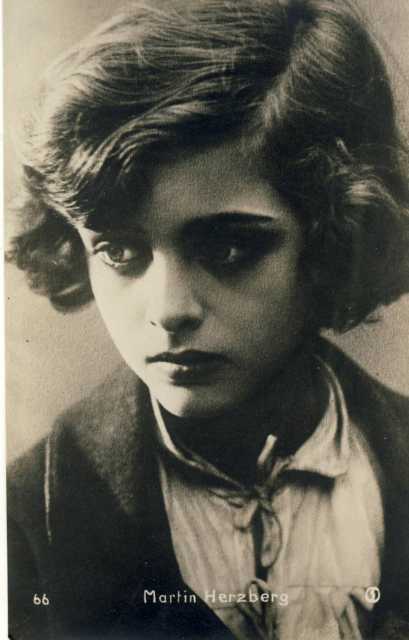
Herzberg was born in 1911 in Berlin, Germany, of Jewish heritage. He began work as a child model at the age of six. Shortly before the end of WWI he was discovered for film, appearing in over 30 films during the silent and early sound eras before 'retiring' from film at age nineteen.
After ending his film career, Herzberg left Germany for the Canary Islands. In 1931 he held an acting seminar with the actor, director and dramatist Eugen Herbert Kuchenbuch. When the Nazi's took power in Germany, Herzberg remained in Spain. During his adult life, Herzberg worked as a photographer in Tenerife. He also was a screenwriter for the 1940 Spanish film, 'Gloria del Moncayo.' Herzberg married while in the Canary Islands and had a son who was born in 1955. Herzberg died circa 1972.
Wikipedia provides general biographical information at: https://de.wikipedia.org/wiki/Martin_Herzberg_(Schauspieler)

GGCo 242/1
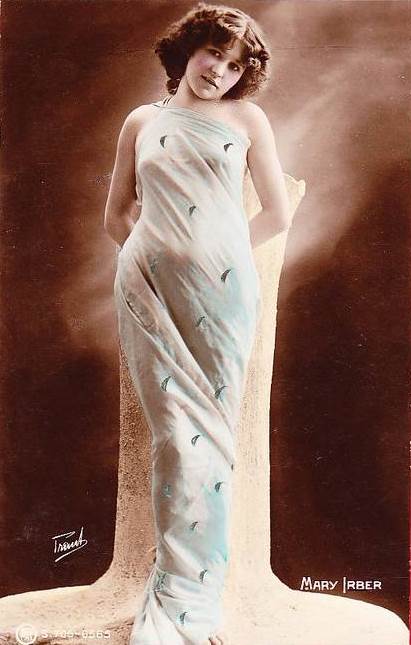
RPH 705-6565
A cabaret artist, Irber is listed in the Neuer Theater Almanach from 1903-1914, with consistent entries found for the Munich Intimes Theater. It is there that her performances drew the attention of censors. Harold Segel's 1987 Turn-of-the-century Cabaret describes the situation:
"When Wedekind [a satirical cabaret star] left the Intimes Theater, Vallé managed to keep it going until mid-May 1909 largely on the basis of appearances by the comic Josef Schaffer and the popular chansonette Mary Irber (whom Klaus Budzinski characterizes as 'the first vamp in German cabaret'), and increasingly tasteless programs having more in common with 'girlie' shows than cabaret. As performances became more revealing and more pronounced in their sexual content, the Intimes Theater found itself on the defensive against mounting pressure on the police to close it on grounds of indecency. Vallé successfully countered this pressure until a run-in with the Munich Allgemeine Rundschau proved his undoing. A libel trial over the newspaper's charge of obscenity escalated into a fullscale legal battle which left Vallé without a leg to stand on. A court decision in favor of the newspaper resulted in the official closing of the Intimes Theater on May 15, 1909."
A digital copy of Allgemeine Rundschau is available on-line at HathiTrust.org with further details. Other period publications are also available at the HathiTrust, providing descriptive narrative of Irber's performance. For example, the 1905 Bühne und Brettl wrote:
"She is an earth spirit in every direction. Her whole person is the living gesture of love... Mary Irber is the purest lightning conductor. When she sings, it goes through the audience in electric waves and draws every individual into their spell. When she smiles, a wild noise of applause goes through the hall. She has the greatest success because she is the greatest artist, and a beautiful woman, young and conscious of her effect."
Describing Irber in his 1993 Die Münchner Bohème, Hermann Wilhelm wrote:
"She was a very slender, black-haired creature ... She wore her hair short, parted, and curled to the sides ... a charming stature, lovely movements, the most elegant dresses and, according to the testimony of all who fell into it, the devil in the body."
Wilhelm also provides a few biographical details: The daughter of a brewer in Munich's Au district, Irber grew up with Karl Valentin [also a cabaret performer]. By the age of ten she appeared in the ballet of the Deutsches Theater and later at the Gärtnerplatz-Theater. At the young age of sixteen, she debuted in the "Überbrettl" [cabaret] as a barefoot dancer and chanson singer. She later became the first star of the Intimate Theater and then an internationally known performer after a tour through Europe. Even though she had no major business experience, Irber made all her own contracts and negotiations right from the beginning and was without a manager throughout her life. Known by friends as Mizzi, Irber was one of the best-known cabaret celebrities with many admirers.
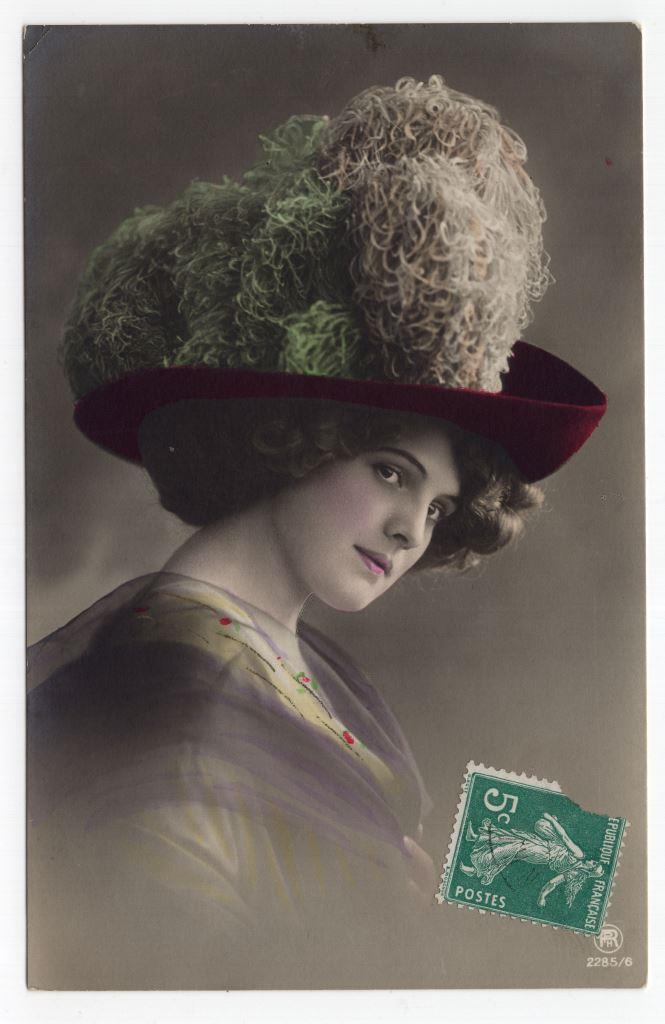
RPH 2285/6
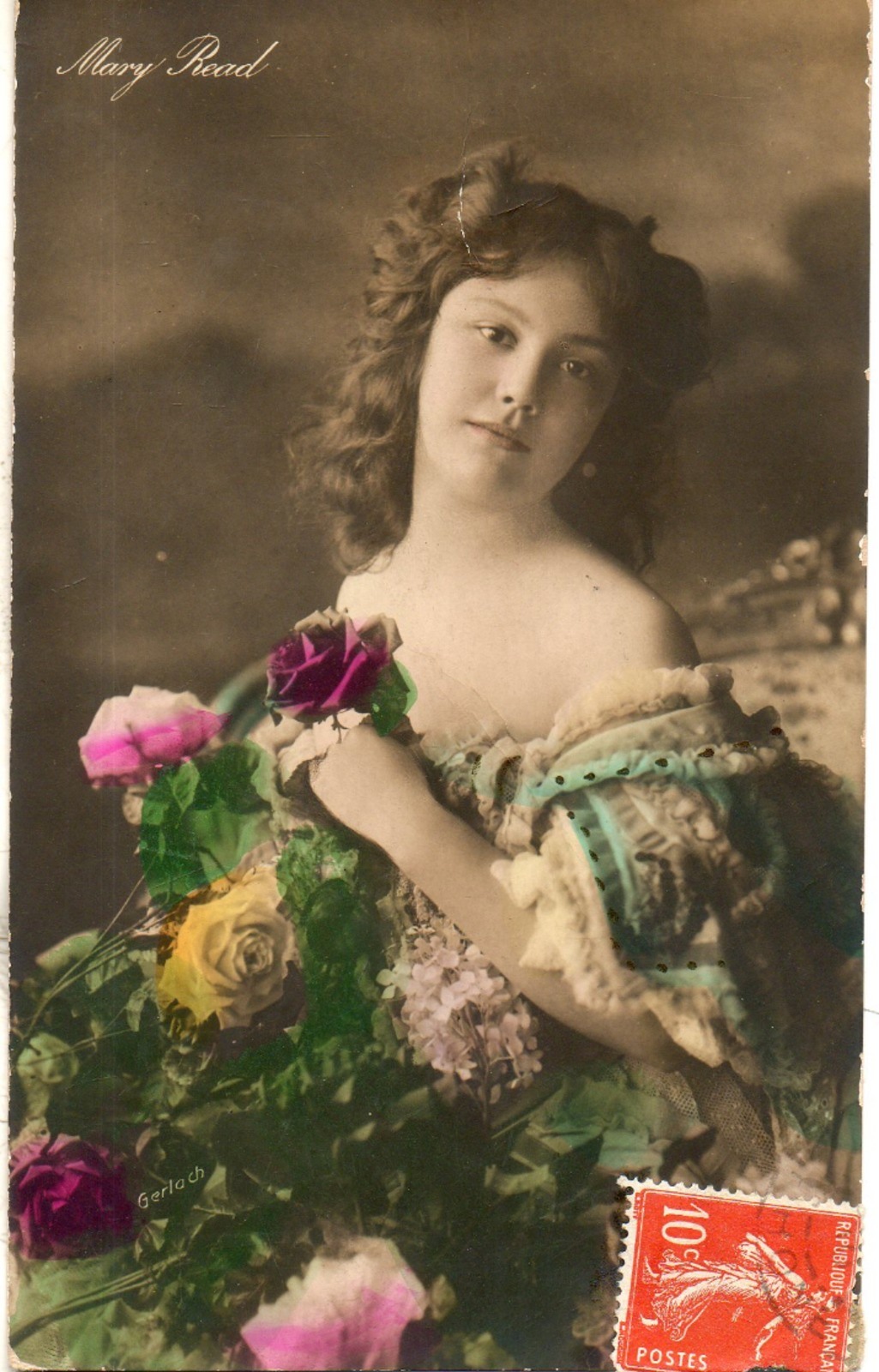
GLCo 3153-3
(Alice on the left)
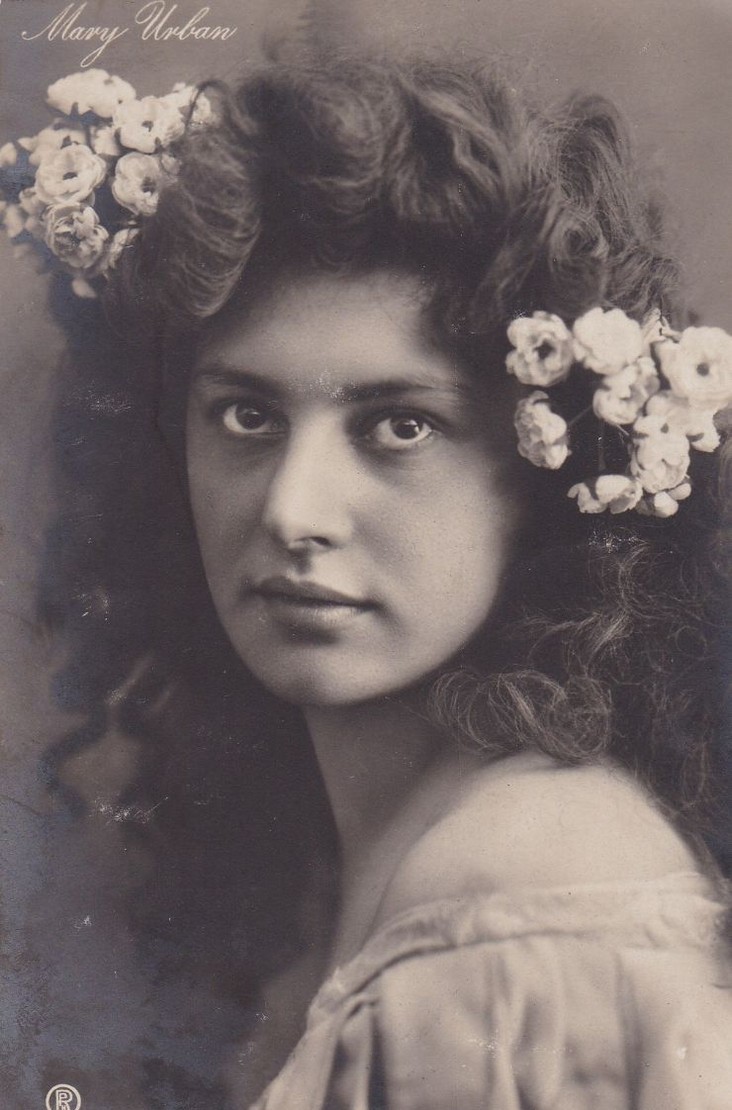
RPH 1111/6
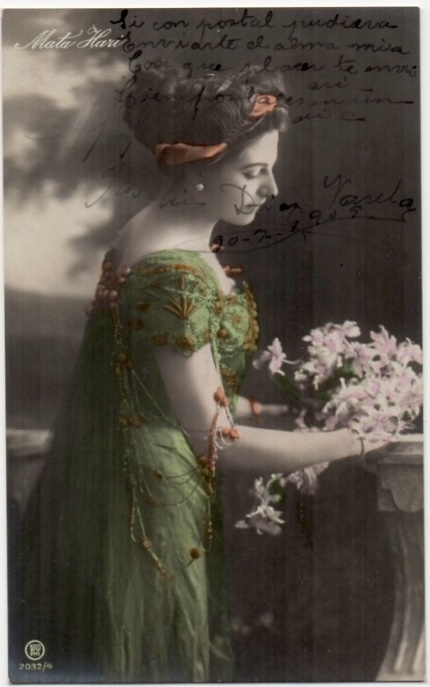
RPH 2032/4
Mata Hari is the subject of a lengthy biographical sketch on Wikipedia which cites numerous print sources. Her life has also been the subject of several films, including the 1931 Hollywood production starring Greta Garbo; three stage musicals; and a ballet which was debuted by the Dutch Royal Ballet in 2016. Mata Hari's Last Dance is a book of historical fiction released by Michelle Moran in 2016.
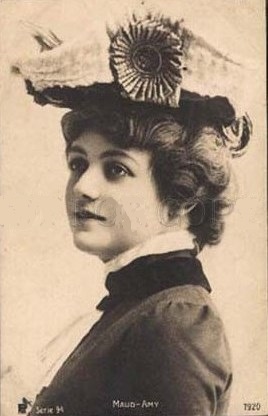
RPH 94
A 1907 issue of Le Théâtre includes a longer narrative relating to Maud Amy. Since so little other descriptive information has been found, a large portion of the article is translated here:
"In a quiet street near the Bois de Boulogne, Mademoiselle Maud Amy lives in a nice, quiet hotel. There is a small garden which is favorable to contemplation as it is enclosed in old ivy and sheltered by large sycamores. The precious tapestries of the dining room evoke the beauty of the vanished eras. In the living room, a painting by Meissonier and an 18th century street scene by Leloir show a keen taste for old costumes, and a beautiful canvas by Ziem celebrates the light of Venice. Mademoiselle Maud Amy loves the elegance of yesteryear; but she appreciates the charm of the automobile that takes her to distant countries.
"She is a traveler, and theatrical tours have for her an irresistible seduction... But she also likes to wander according to her fancy and without professional concern in countries of art or mystery. She lingered in Italy and became intoxicated by Florentine languor; She experienced the intoxication of Granada, and the gypsies danced for her in the gardens of the Alcazar; She spent time in Morocco with the favorites of the sultan... She left her house without regret, but returned with joy to her library, for she loves the books of old with their precious bindings in delicate shades.
"When she was very small, she played in the Garden of Luxembourg in Paris and no doubt she daydreamed before the garlands of the Medici fountain. Perhaps the sight of these old stones and greenery inspired her, like so many others, with a fondness for the harmony of the past. But, close by, was the Odéon, and on its posters was the victorious name of an actress: Rejane. The little girl wished to meet the great actress whom she had never seen... She asked for an interview which was granted to her, but as far as I know, she never dared to approach her idol...
"It is now time to recall that Mademoiselle Maud Amy has soft, deep eyes and an irresistibly seductive forehead. Others will celebrate her nose, mouth and shoulders. I only want to think of her forehead and her eyes. They give her entire being an intelligent, emotional, melancholy grace. One would think that she was born to represent heroines who are confronted with pain, to evoke women whose existence has been wounded; but she is also cheerful and not incapable of coquetry. The scope of her talent pleased Victorien Sardou, who cast her in la Perle Noire at the Gymanse; he remained for her an attentive and wise counselor...
"We must hope that Mademoiselle Maud Amy's career will be long and that her talent will flourish harmoniously. Right now she goes from town to town. She plays the l'École des Maris, l'Ecole des Femmes, le Jeu de l'Amour et du Hasard, la Gageure imprévue and also the adorable Bettine, this delicious comedy by Alfred de Musset... And as Bettine must sing, Mademoiselle Maud Amy murmurs the gentle complaint of Fortunio. As soon as this tour is completed, the actress will embark for North America. She will study the conditions of the theater in New York and, as she speaks English impeccably, she will probably produce two French plays each year there. Her desire would be to create them in Paris and then perform a translation in the United States. She has audacity and willpower... But on the boat she will think of the small, pretty and silent hotel, and the garden where she dreams under the sycamores."
No additional information was found to confirm whether Maud Amy went on to perform in New York. French references to the actor appear to end in 1908. A 1906 overseas report in the U.S. publication, The Billboard, provides an amusing look at the world of the Parisian theater:
"The sentimental play, Les Plumes du Geai, to which I referred last week, has quite caught on at the Theatre Moliere, and Mlle. Maud Amy has scored a great success in her role. All Paris is flocking to see her -- or the play, or [?] -- and seats are booked for the best places up to the middle of March. This is quite an achievement for a Parisian theatre, as in this city it is rare for anyone to take a seat for even the next day. He leaves it to the very afternoon, then having decided where he will go rings up and secures a seat. The result is that between the hours of five and 7 the short-handed staff of phone employees become absolutely distracted and correspondingly helpless, with the result that one can never get through to anybody. The way they manage the telephone service over here is a disgrace, but I fear this has nothing to do with theatrical news."
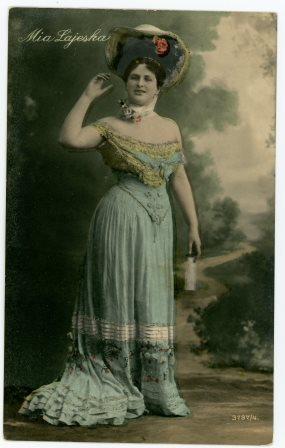
Unk. Pub. 3197/4
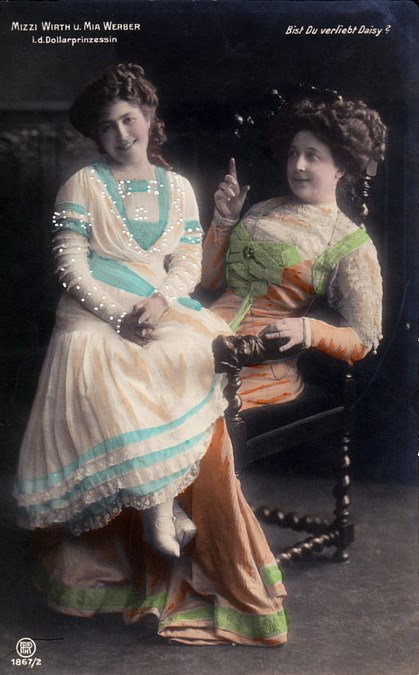
RPH 1867/2
Born and receiving her musical training in Vienna, Werber was performing in Germany by 1897. In 1898, she was engaged at the Thalia Theater in Berlin where she debuted in the role of Mimosa in the operetta, The Geisha. She toured throughout Europe and South America through the 1920's. After that, she worked as a singing teacher in Berlin.
A 1903 review of The Geisha in New York's The Theatre reported: "Among the principals participating, Fraulein Mia Werber is the commander-in-chief. She is very small, piquant and vivacious, and approximates American ideas of grace."
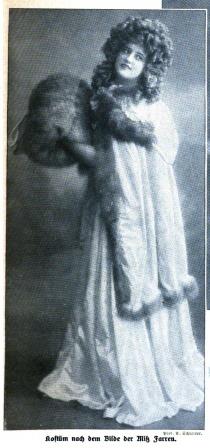
Die Woche
1911 Nummer 5

RPH 1867/2
Special effects for one of Wirth's silent movies, Die Grosse Wette, were described in a 1909 issue of Moving Picture World: "The film is supposed to take place in the year 2000 and Mr. Piel [the director] has endeavored to give a representation of the world as it will be at that period. Needless to say astonishing and intricate technical tricks, including an airline cab-service, an exceedingly cleverly constructed millionaire's palace with all twenty-first century conveniences, a library whose books step out of place by merely pressing upon a button, were used as means toward showing life in the next century... Criticisms over the film are divided, but in general the work has been favorably received, inasmuch as it is a change from the ordinary love drama and also points the way toward a new school in films. The leading parts lie in the hands of Mizzi Wirth and Ludwig Hartmann, who executed their respective roles with great understanding."
An interesting anecdote relating to Wirth was seen in several news publications which carried this story from 1911 Berlin:
"An amusing event in Berlin theatrical life last week was a game of hide and seek played between one of Berlin's most popular artists Mizzi Wirth, and some of the bailiffs. Mizzi Wirth is one of those light-hearted daughters of the muse who find it difficult to reconcile expenditures and receipts. Besieged on all sides by creditors, her life lately has been largely spent in outwitting and dodging them. As a last resource she transferred the huge salary of which she is in receipt to her mother, contenting herself with a nominal sum, which the bailiffs could not touch. Her jewels and ready money were hidden about her so skillfully that personal visitations, frequently enforced, failed to yield results.
"One of her creditors, however, at last obtained a warrant for her arrest and went to the theater where she was playing to execute it. After the performance Mizzi Wirth, being apprised of this, changed clothes with her maid and left the theater with the audience. The maid was promptly arrested and taken to a police station. Before the matter was cleared up Berlin's charming operetta diva was en route for Russia. She arrived at Warsaw next day, and is now performing at a large salary at the principal music hall, where she expects to be joined by her maid shortly."
The Dutch publication Het Theater identified the interrupted performance as Die schöne Helena by Offenbach at the Neues Operetten-Theater in Berlin.
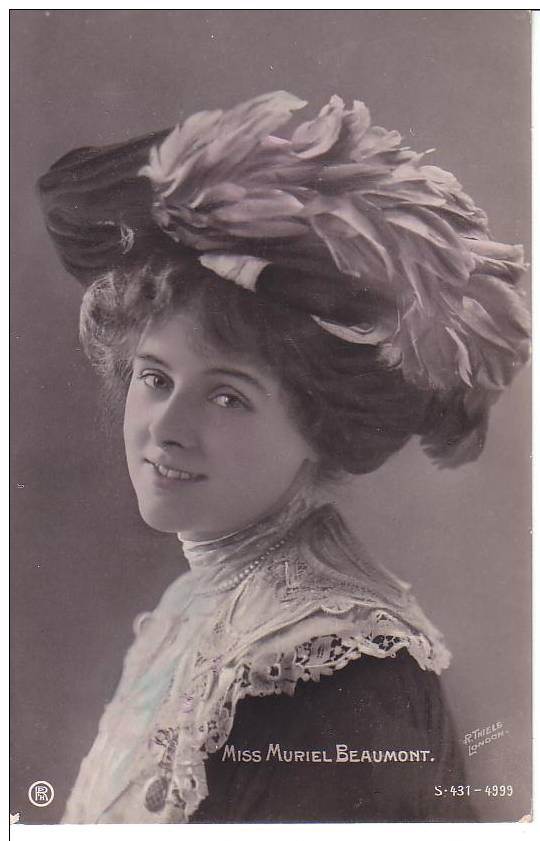
RPH 431
Beaumont is the subject of a brief biographical sketch on Wikipedia.
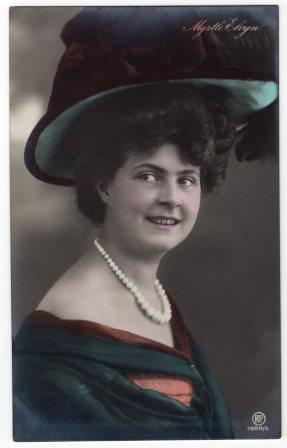
RPH 1888/6
The small family moved from Texas to Chicago where Myrtle studied piano. Her talent attracted the attention of a group of society women, including Mrs. Marshall Field and Mrs. Richard T. Crane, who became her loyal patronesses. Myrtle appeared in public recitals at 13, playing challenging classical works. In 1902, Myrtle was sent in the company of her parents to Berlin to study. Following two years of studies in Berlin, she made her debut there in 1904. She followed this with concerts in Paris, London and other European cities. She performed before the courts of King Edward and Kaiser Wilhelm to strong reviews. While in Europe, the family changed its name from Levy to Elvyn, both Myrtle and her parents.
Upon her return to the U.S. in 1907, Myrtle’s bookings were made by the W.W. Kimball Co. based in Chicago, Illinois. This affiliation with the Kimball Company continued throughout her career. With frequent appearances at Kimball Hall in Chicago, Myrtle toured cities such as Spokane, Tacoma, San Francisco, Los Angeles, Salt Lake City, and Brooklyn. In addition, she made several return trips to Europe. During one European tour, Myrtle appeared before Kaiser Wilhelm who was so pleased with her performance that he publicly presented her with a diamond broach.
Myrtle continued to perform through the late-teens. In 1917, her mother announced Myrtle’s marriage to Harry Bloch. The Bloch’s had two sons, one born in October 1917, the other in 1920. After her marriage, Myrtle’s concert performances gradually tapered off, although her name continued to be used in Kimball piano sales materials for several years. Her death was reported in the February 19, 1975, New York Times.
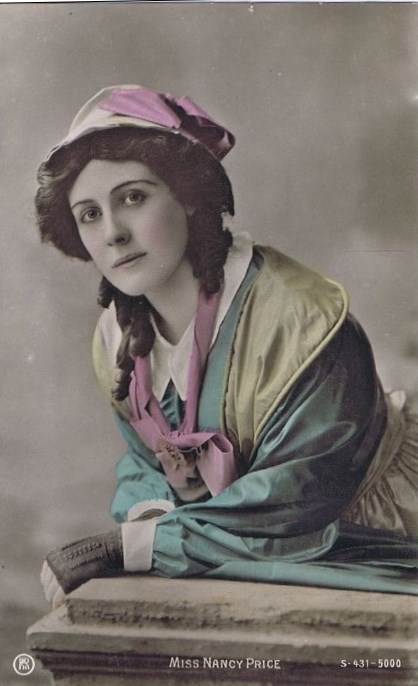
RPH 431
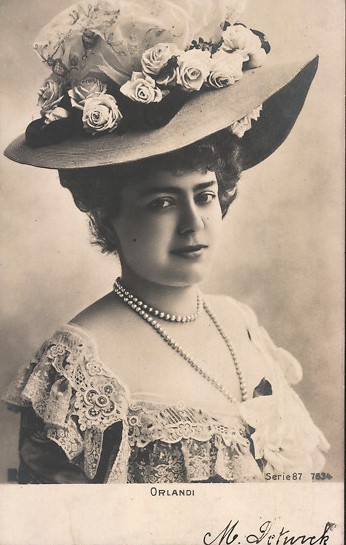
RPH 87
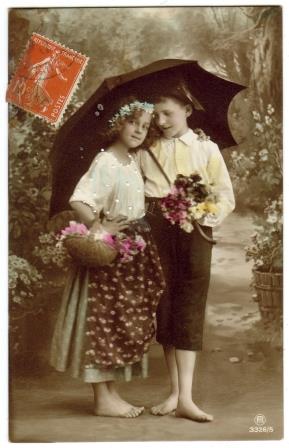
RPH 3326/5
Otto appeared in about 35 films between 1913 and 1932. Several of the films were Danish, issued at the time the family relocated from Germany to Denmark during WWI. In his 1949 book on child stars, Alverdens Barnestjerne, Arnold Hending includes a quote from the Danish film director, Benjamin Christensen, describing his 1913 work with Otto: "There was a good portion of courage in him. One thing he feared: Water... In the scene, he was climbing along a horizontal beam over half meter of water. I could see his face turn green in terror, and he clung to me like a drowning man, his heart beating like a sparrow when you hold it in the palm of your hand ... Now I started wondering whether I shouldn't abandon these scenes, rather than torment the boy, but when I said this to him, his protests were characteristic. He would not give up, and a few minutes later, the images were in the box."
Kay Winger's Zwischen Bühne und Baracke notes that Otto was blacklisted by the Nazi's. While that information has not been confirmed by another source, no film entries have been found for Otto from 1932-1944. After WWII, film entries for him resume in movie production, with almost 25 films released through 1965. Otto died in 1968.
Otto's sister, Elsbeth, was married to the Russian-born composer, Mischa Spoliansky. When fleeing Germany from the Nazi's in 1933, Mischa was accompanied by his brother-in-law, Otto. They travelled third-class and the journey was long. "At the last station before our destination, a few brownshirts entered our compartment and removed a Jewish couple and their adolescent son, their protests did not help. I was pretending to be asleep, my head leaning against the window, a cap pulled down over my face. Just as they were about to interrogate me, their superior called them out as the train was about to leave. It was a terrifying moment."
The next day, when Eddy followed with the children, brownshirts once again got on the train. Confronting Eddy with "Didn't a Spoliansky come through here yesterday?" officials tried to remove her from the train. A group of tourists came to her defense, and Eddy was allowed to remain, but ordered to relinquish her passport. After Eddy's arrival in Erhwald, acquaintances recovered her passport from the border post. Mischa later learned the acquaintances belonged to the Austrian Nazi party, but they were a great fan of his music.
The Spoliansky grandchildren maintain The Mischa Spoliansky Trust at www.mischaspoliansky.com and generously shared the source of this information.
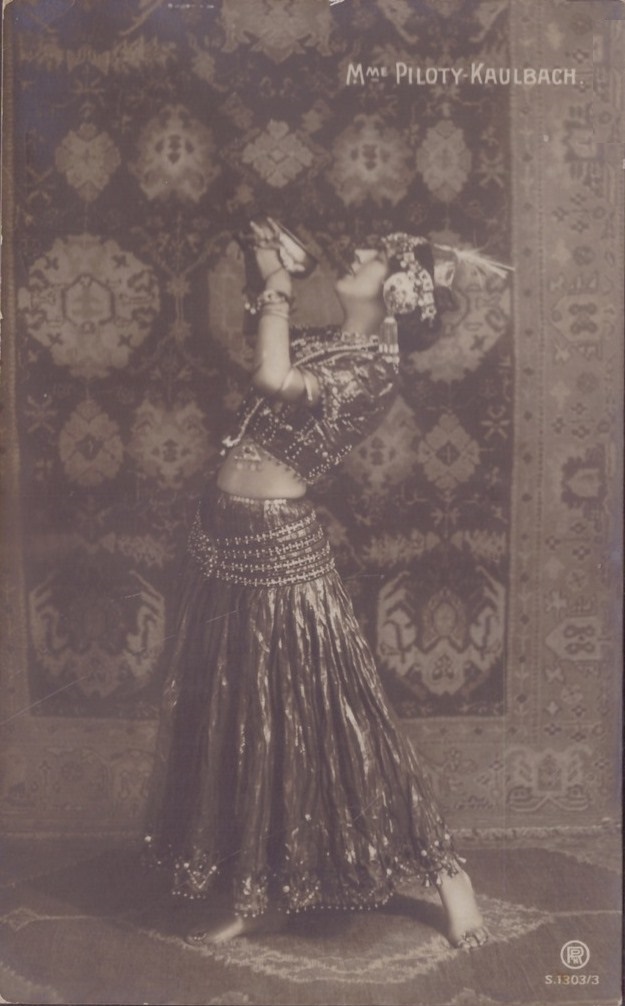
RPH 1303/3
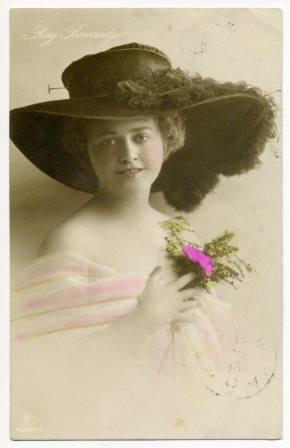
RPH 4399/4
Beginning in 1915 Beveridge returned to the US and propagandized for the German cause, raising funds for the German war effort through a series of lectures. A right-wing activist, she initially planned to work for the cause of hungry German children, but changed the focus of her efforts to a racist, crude, and inflammatory agenda against blacks. Later involved in the Nazi party, Beveridge was honored by Hitler at the 1936 party rally.
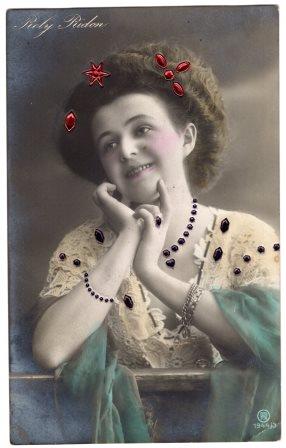
RPH 1944/3
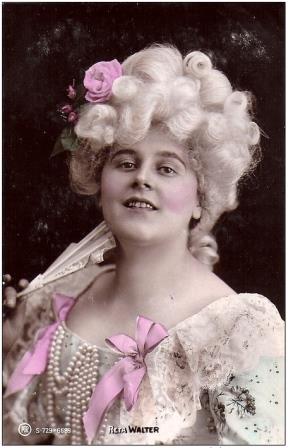
RPH 729
Walter's picture was published in a March issue of the 1906 The Sketch, with the caption, "The Most Popular 'Postcard' in Germany: Fräulein Rita Walter has just been returned at the head of the poll in a 'popular-actress competition,' and her portrait, in picture-postcard form, has prominent place in most German stationers."
In October of the same year, the cover of the same publication was a memorial tribute to the young actress who had been the victim of domestic violence. Its caption read: "Fräulein Reta Walter, the Young German Prima Donna Who Was Shot Dead Last Week by her discarded sweetheart, was one of the most popular young opera singers in Berlin, and on the night of her murder she was to have appeared at the Komische Opera as Carmen. She was only twenty-one, and was the daughter of a well-to-do manufacturer who died a year or two ago. Her murderer shot himself after killing her."

RPH 7237/1
Tauber's biographical sketch on IMDB.com reads: "Second only to the great Caruso, Austrian opera singer Richard Tauber is revered as one of the world's finest Mozartian tenors to come out of early to mid-20th century Europe. . .(R)ealizing and acknowledging his operatic niche, Tauber progressed quickly and made his public concert bow in 1912... Part Jewish on his father's side, the rise of Nazism in his native Austria had Richard making frequent out-of-country appearances in London... Following skirmishes with Nazi purists, he eventually emigrated to London....In 1947, Tauber sought help for an aggravated cough which was subsequently diagnosed as lung cancer... Tauber died of complications [following surgery] on January 8, 1948."
In addition to his operatic work, Tauber also appeared in a number of film musicals.
The IMDB entry includes a number of other details.
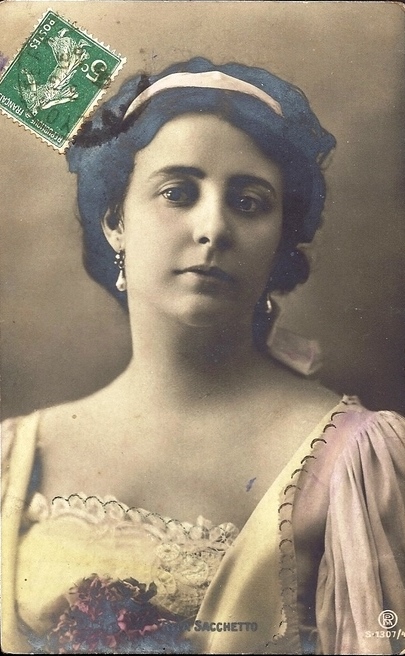
RPH 1307/4
"In this city of many arts, where some of the most successful efforts have been made toward the combination of the arts of architecture, painting, drama, music and dancing, Miss Sacchetto holds an honoured position. Her genius, not only in performing but in composing and producing her dances, has won the admiration of all art-lovers and during his lifetime the painter, Lenbach, showed great interest in her work. Her costumes and mise-en-scènes are studied with the minutest detail and she has a wonderful talent for reproducing the atmosphere and style of the works of painters whose pictures she interprets in her dances. Velsasquez, Botticelli, Greuze and Rossetti are some whose works have inspired her. In costume, colouring and in the character of all her movements and poses she carries out the distinguishing style of these masters, not only as exhibited in the particular picture that has inspired her, but throughout their works generally."
Sacchetto was active in silent films, acting for several years at the Nordisk Filmgesellschaft in Copenhagen, Denmark, and appearing in about 20 films. She also ran a dance school at her villa in Berlin; Anita Berber and Valeska Gert were among her most famous pupils.
In 1917 Sacchetto married the Polish sculptor, Auguste Zamoyski, with whom she collaborated on several performances. The couple later divorced.
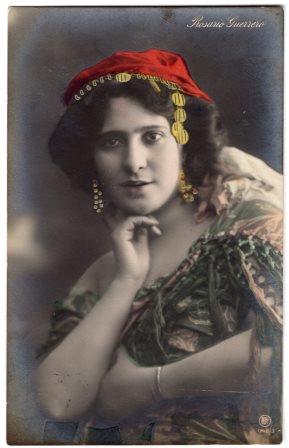
RPH 1740/3
A collector's website related to Guerrero is at rosarioguerrerospanishdancer.weebly.com.
Guerrero is connected to Ernst Schneider through a 1908 issue of The Sketch.
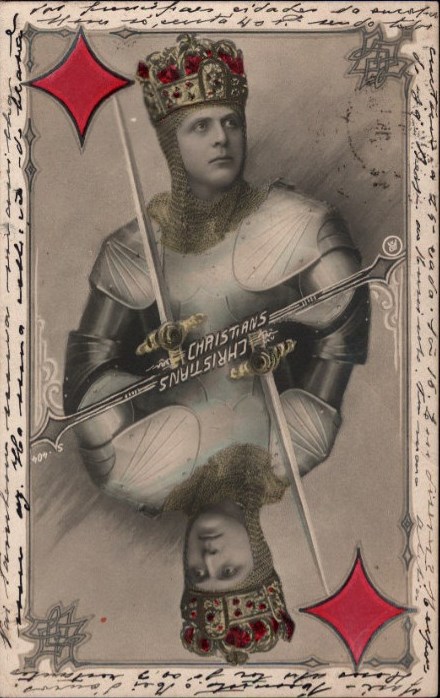
RPH 404
Christian's daughter, Mady, also was an actor. Both are the subject of biographical sketches on Wikipedia.
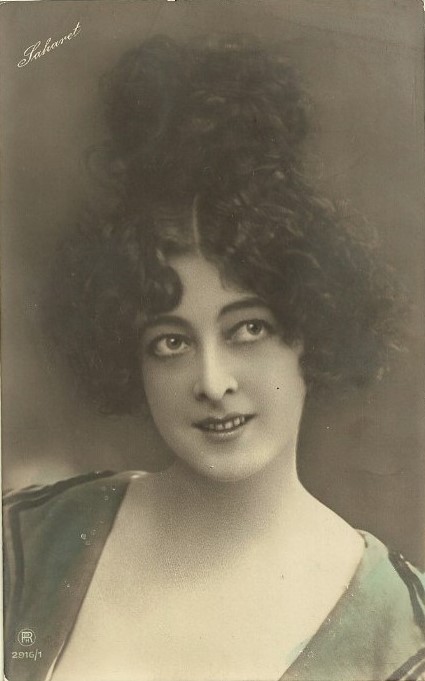
RPH 2916/1
Known for her can-can high kicks and whirling performances, Saharet was immensely popular, especially in Europe where headings in German papers read 'Bismark the Great' and 'Saharet the Wonder.' Back in the U.S., the July 1898 Broadway Magazine had this to say: "Saharet probably has the busiest feet of them all. She is a pretty little black-haired woman with snappy eyes and vivacious manner. She doesn't waste a moment from the time she makes her appearance before the footlights. She comes out, bows, shows a fine set of gleaming teeth, grasps her skirts and in a moment is lost in a mass of fluff. At first, the impression prevails that she must have more than two legs, so wonderfully does she manipulate her nether limbs. She is very candid, is Saharet. She is there to dance, and the fact that during her gyrations the audience may catch glimpses of her lingerie does not in the least affect her equanimity."
Announcements of Saharet's dance performances taper off around 1917. In 1921, a single notice was seen in the Seattle Daily Times: "Mlle. Saharet, although 53 years old and a dancer for many years, has been engaged for the role of Madame Du Barry, now playing at the Apollo Theatre in Berlin. Mlle. Saharet saw the filming of the life of Madame Du Barry in which Pola Negri was starred."
Reading through the news clippings, Saharet's life, like her dance, seems a whirlwind. Born Paulina Clarissa Molony she was later known as Clarice (Clarise/Clarissa) Campbell. At about 16, she married entertainment manager, Ike Rose (Isaac Rosenstamm). Their only daughter (with whom Saharet appears on some postcards) was born in 1896. After the end of her marriage to Rose in 1912, Saharet married a wealthy Chicago businessman who was totally infatuated with the dancer. His continual insistence that she give up the stage caused Saharet to leave him after a few short days, and the marriage ended within a few months. Several years later, she married Maxim Lowe, an entertainment agent. That marriage lasted more than a decade, but it, too, appears to have ended. Buried in Battle Creek, Michigan where she had relocated in 1947, Saharet died in 1964. Her daughter had died earlier, in 1950, also in Battle Creek.
The news clippings are filled with interesting anecdotes, including descriptions of her fiery red costume, transparent like a spider's web; and the way she livened things up during an interview by kicking off the hat of a newsgatherer; and how her second husband courted her by buying two dictaphones, sending one to Saharet and keeping the other in his apartment so he could listen to recordings she made over and over again.
A more detailed biographical sketch of Saharet is available at https://forgottenaustralianactresses.com/2018/04/07/forgotten-australian-actresses/.
Saharet is connected to Ernst Schneider in a credited photo in a 1910 issue of The Bystander
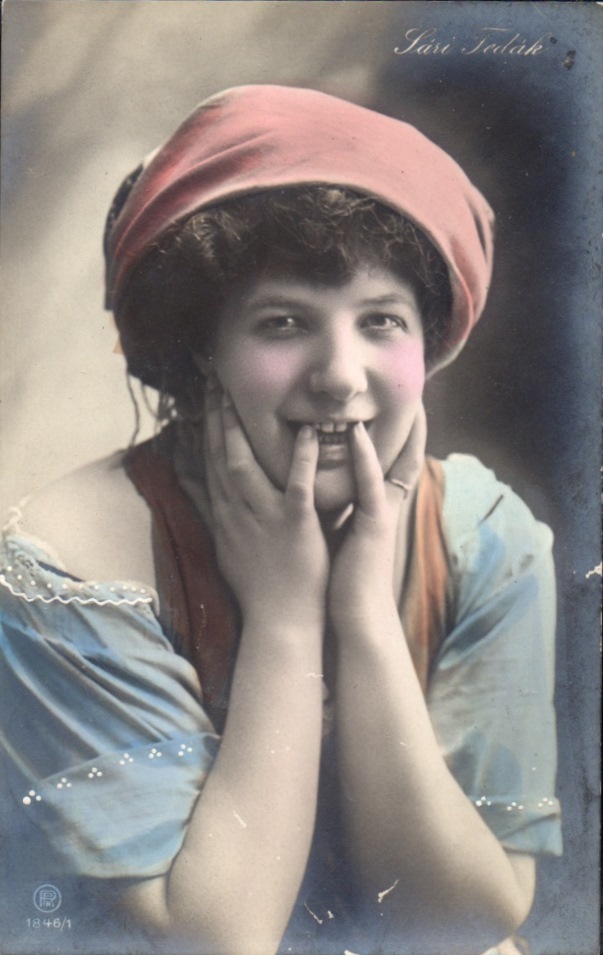
RPH 1846/1
The European Film Star Postcards blog describes Fedåk as temperamental, with her life marked by personal and political controversy and scandal. During WW II, while working at a radio station in Vienna, she rallied for Hungary to continue the fight in the war on the side of Nazi Germany. For this act, she was sentenced to eight months in prison after the war, and she was banned from playing in theaters for three years. She never appeared on stage again.
After being released from prison, Fedåk retired from active life and died in 1955 at age 75.
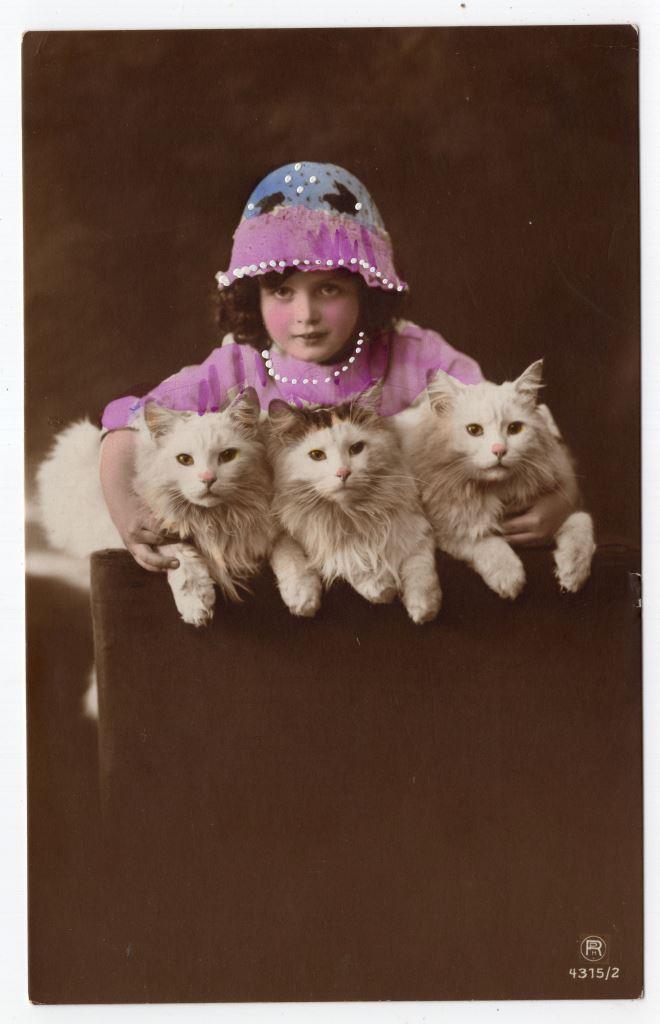
RPH 4315/2
Lafrenz was identified from an advertisement for Lottes erste Liebe, a Bubi film, in the November 1916 issue of Lichtbild bühne. The German Early Cinema Database and FilmPortal.de document her appearance in several Bubi films in the role of Lotte. Ally Kolberg appeared in this film series as well.
No postcard has yet been seen marked with Lafrenz's name.

RPH 1691/6
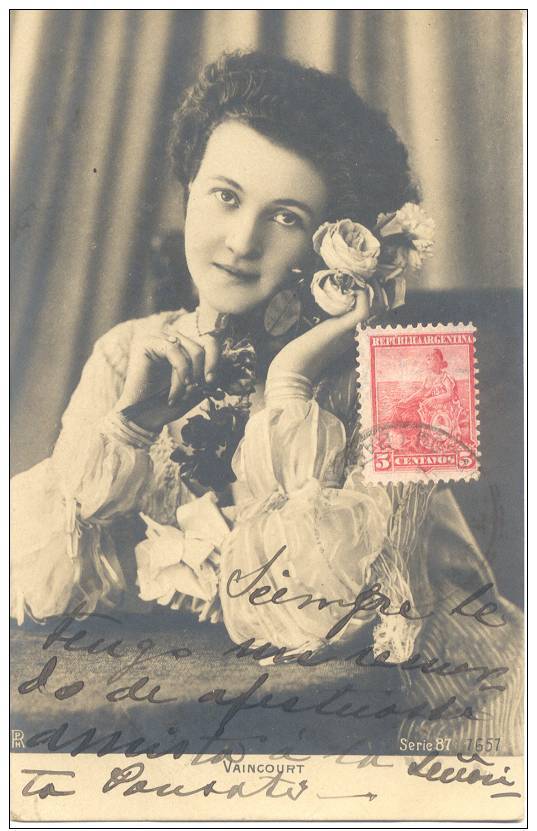
RPH 87
Performing on the French stage in the first years of the 20th century, Vaincourt's beauty was often remarked upon. The 1901 play, Pour le Monde was a comedy in four acts, with luxurious staging filled with young women dressed in exquisite dresses. Vaincourt and a number of other women "triumphantly displayed the wonders of dressmakers and milliners."
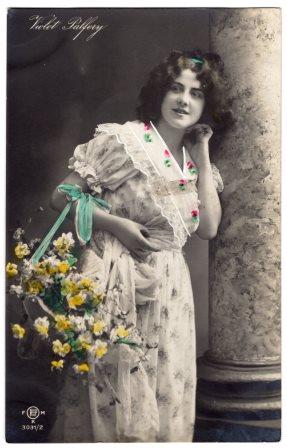
RPH-FMK 3031/2
A 1906 promotional brochure for the Tiller Schools of Dancing presents a photo of Palefray with Tiller's "Houp La Girls," identified in a 1912 publication on modern dance as being better known on the Continent than in England. The same photo appears on an ELD postcard in the 2008 series; that card is marked with the name of the Paris music hall, Scala. Further, Violet appears with Ada Mitchell, Alice Ellis and others on a Getty Image titled Die ersten Tiller - Girls in Berlin 1908, with the Berlin Notes section of a 1908 issue of Variety providing a brief description of the act: "The Tiller Troupe of Girls, all very much 'American,' although English lassies; good to look upon, well dressed and a good show."
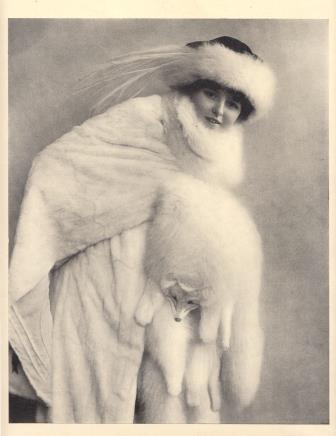
Dashing Stage Beauties
of the World
"Miss Wally, who carefully conceals her family name, is known as the prettiest and most sought-after model in Germany. She was originally on the stage, playing children's roles in the Deutschea Theatres, under Prof. Max Reinhart, the "Belasco of Germany" . . . Prof. Reinhart took special interest in Miss Wally and gave her dramatic instructions, but soon she left the stage when she found that posing for photographers was her real vocation, paid her better and gave her a more agreeable life. She is now engaged by Ernst Schneider, the foremost German photographer, and poses every day for twenty or thirty photographs. Her portrait has become known all over the world, and it can safely be said that no other model has ever reached similar popularity. Miss Wally is said to receive a yearly salary of $9,000. She was born and brought up in Berlin."
The 1908 Neuer Theater Almanach entry for the Deutsches Theater in Berlin identifies Max Reinhardt as the owner and director. The Kinderollen section for the theater includes Wally Pietschel. Neither the 1907 nor 1909 Almanach show the same listing. Additionally Wally Pitschel is listed in Heinrich Huesmann's Welttheater Reinhardt (1983) in Midsummer Night's Dream, playing the Fairies roles of Spinnweb (April 15, 1907) and Bohnenblüte (October 2, 1907). No further information has been found to confirm the connection of Wally Pitschel to Wally the postcard model.
Wally frequently is posed in solo portraits, but also regularly appears paired with others -- Grete and Hanni Reinwald, Ally Kolberg, Kläry Lotto and several as yet unidentifed men, women and children.
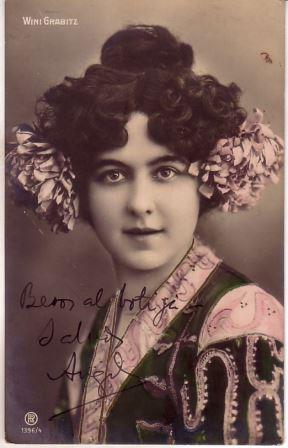
RPH 1396/4
The Filmportal.de documents a Wini Grabitz appearing in three silent films directed by John B. Kirsch for the years 1919-1920. No confirming information has been found linking the silent film actor to the RPH model.
